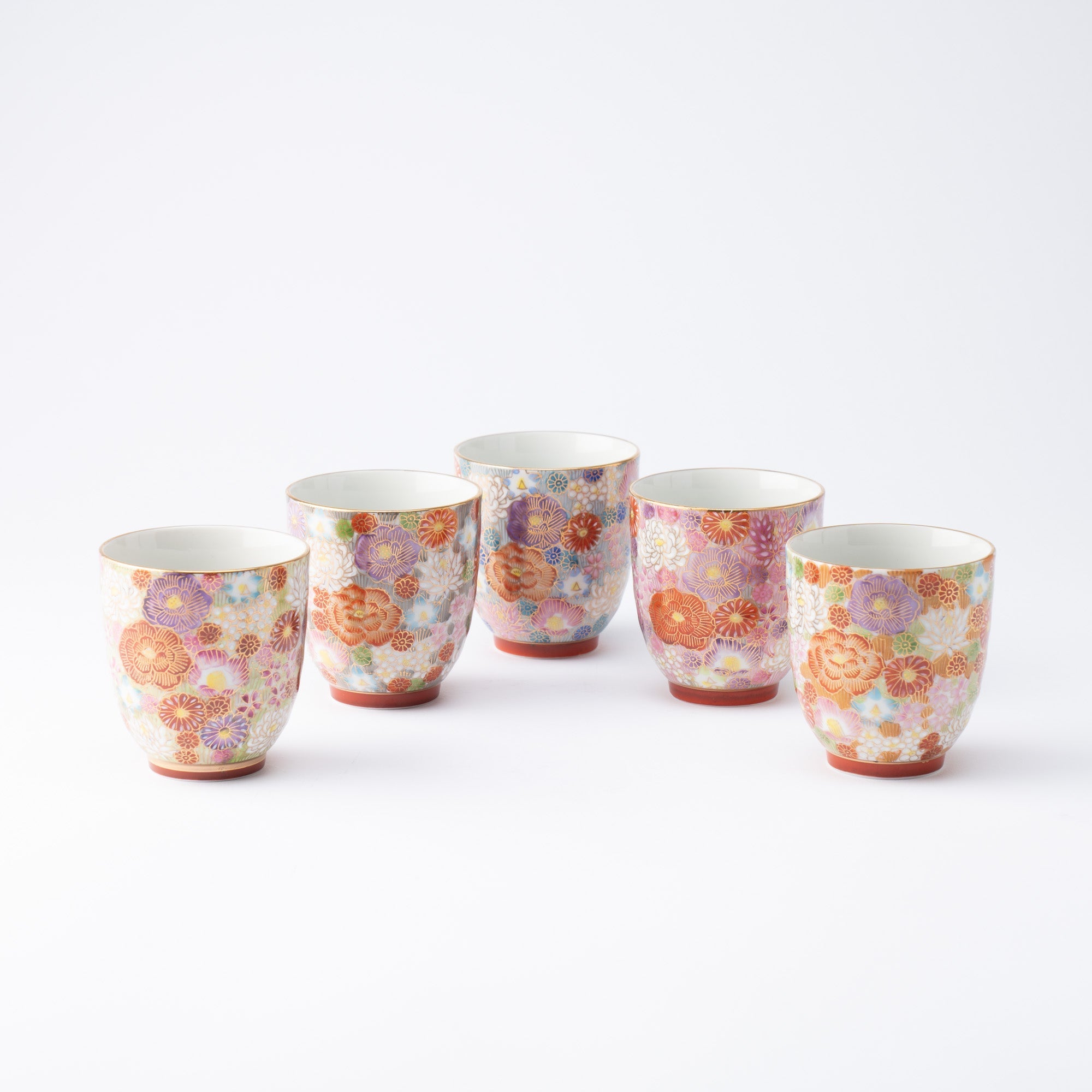
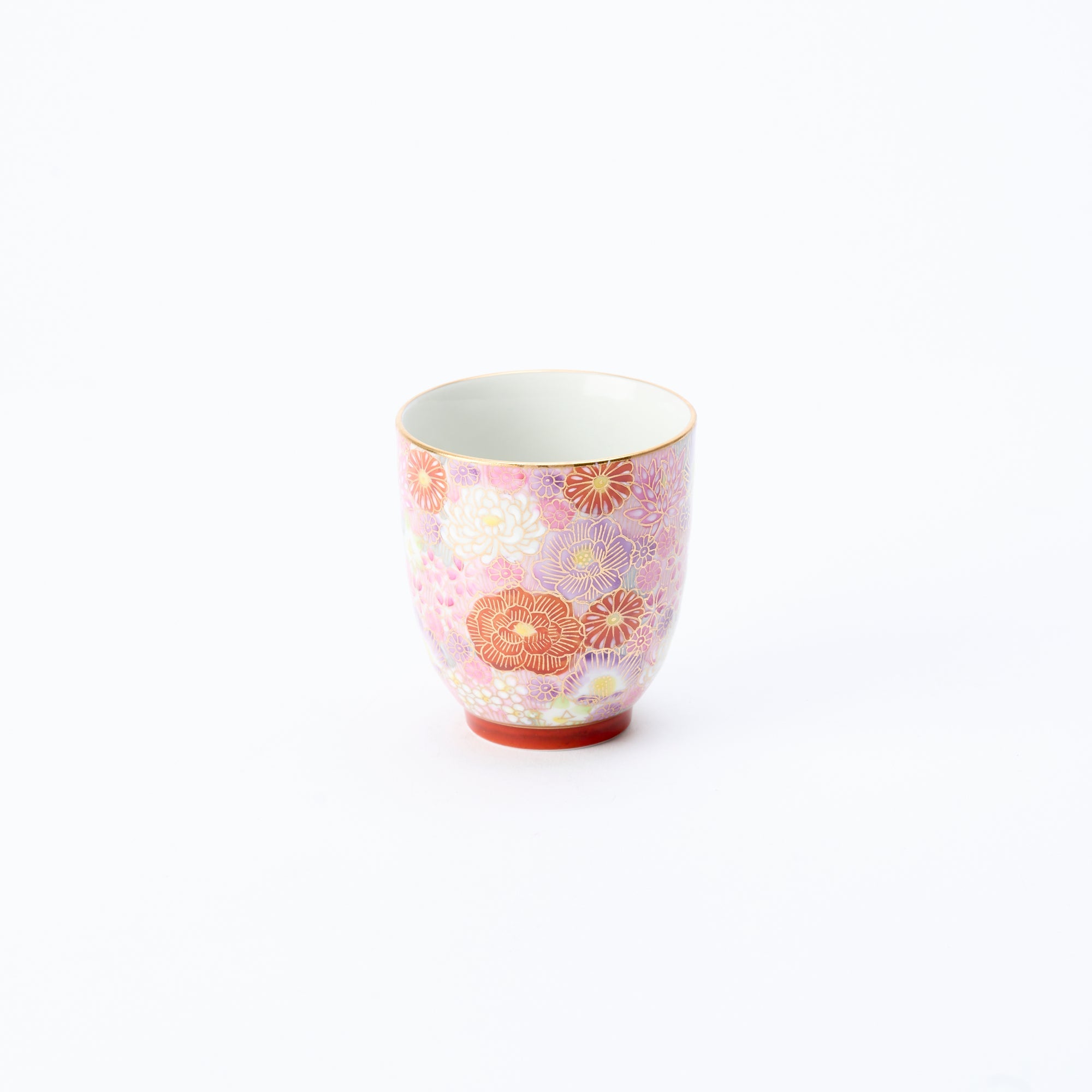
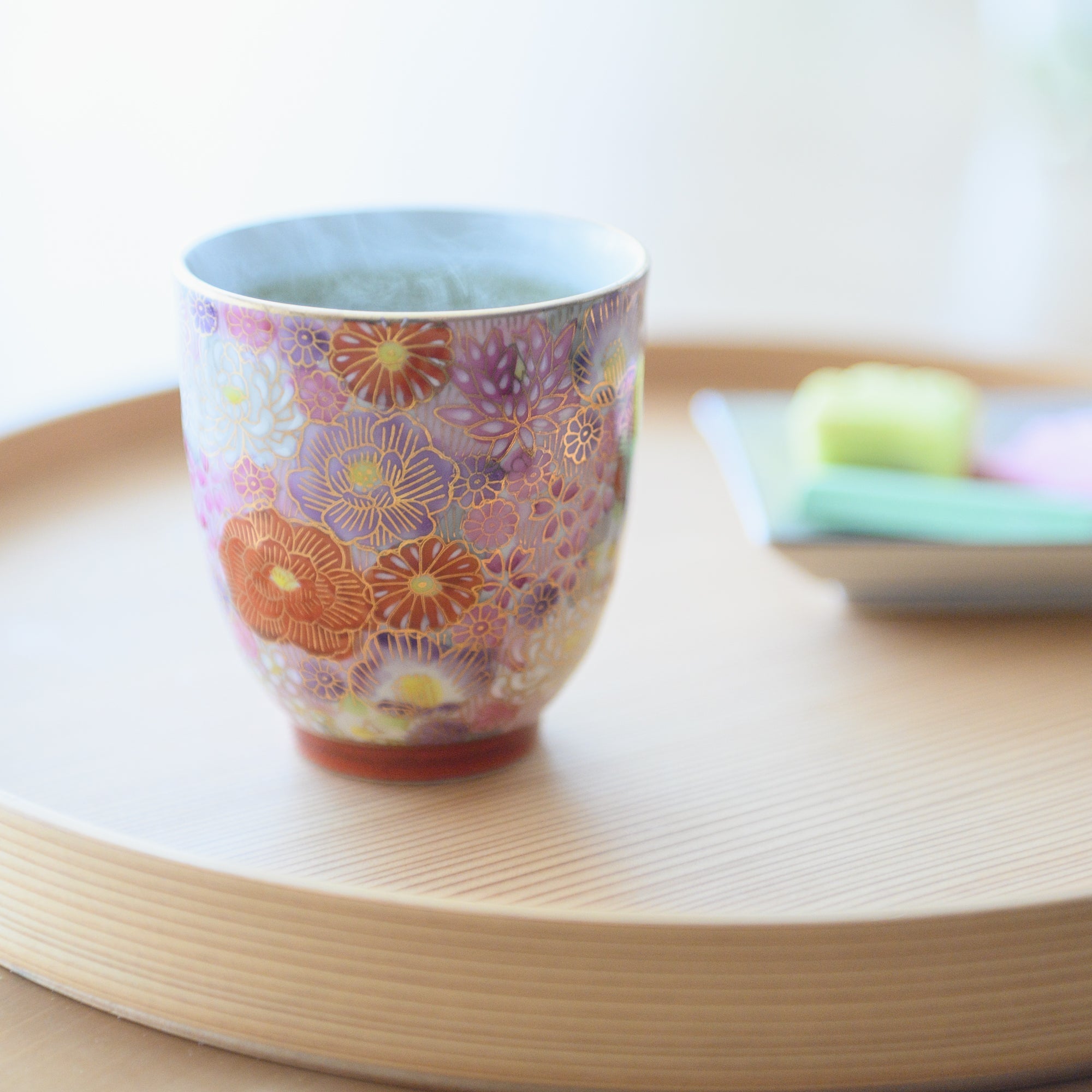
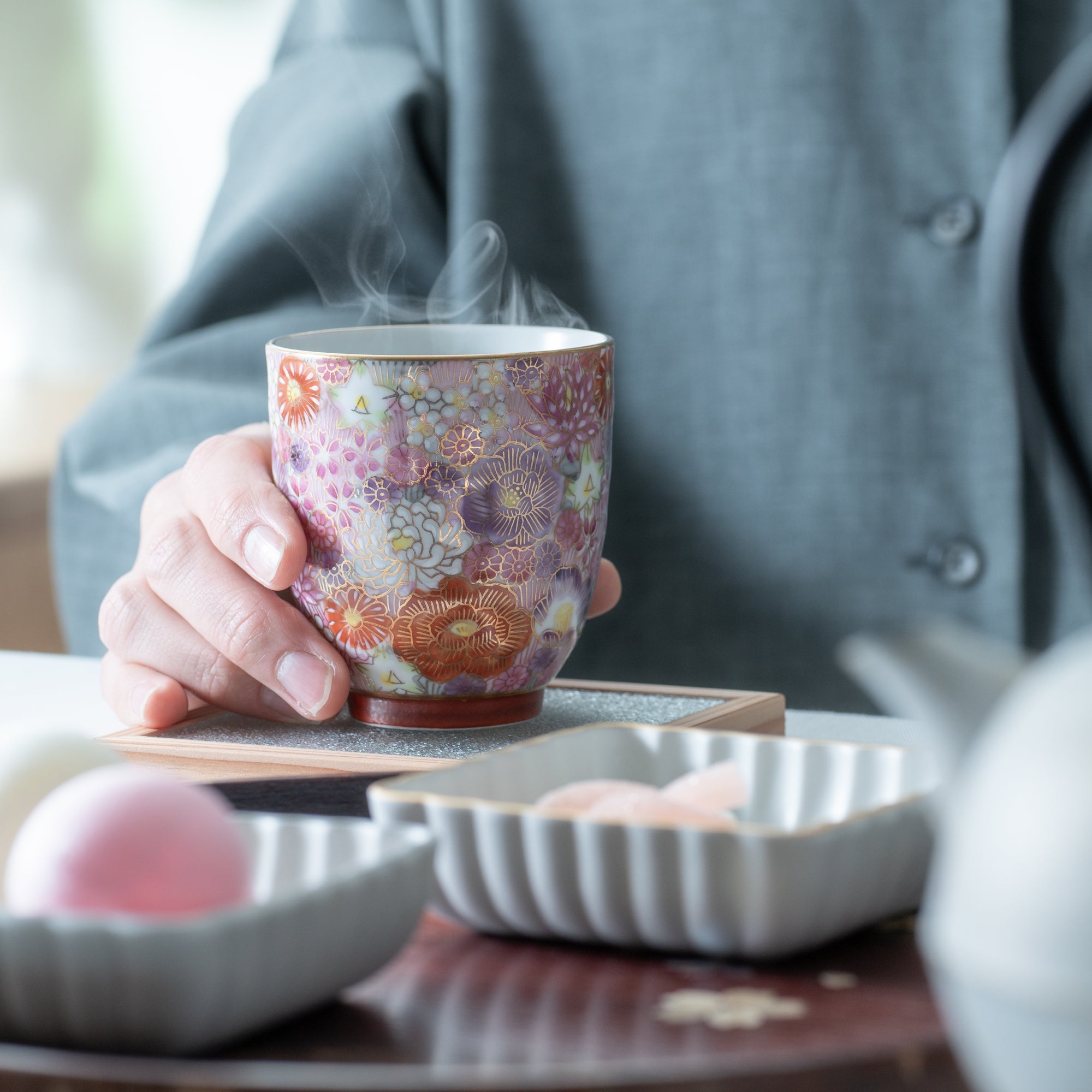
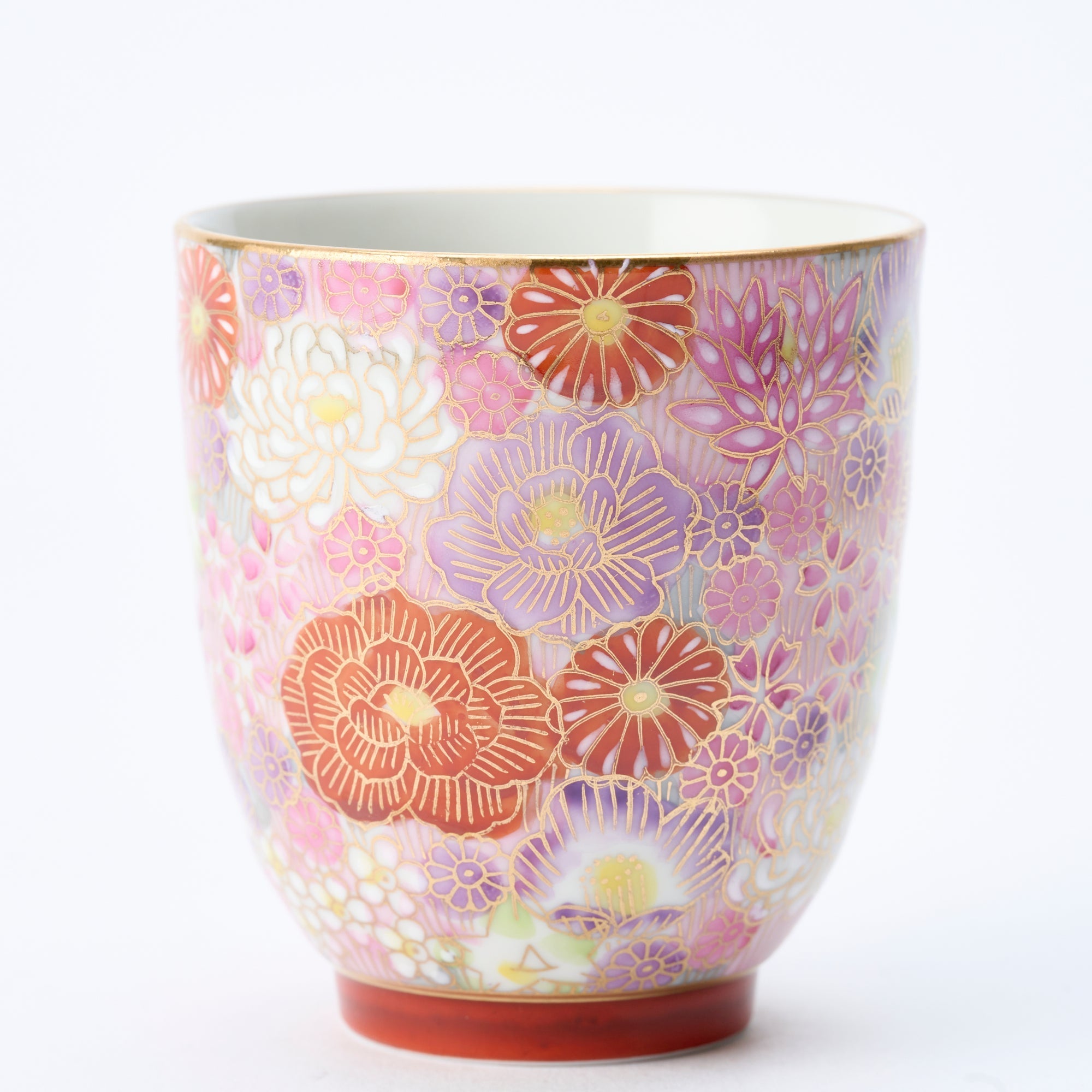
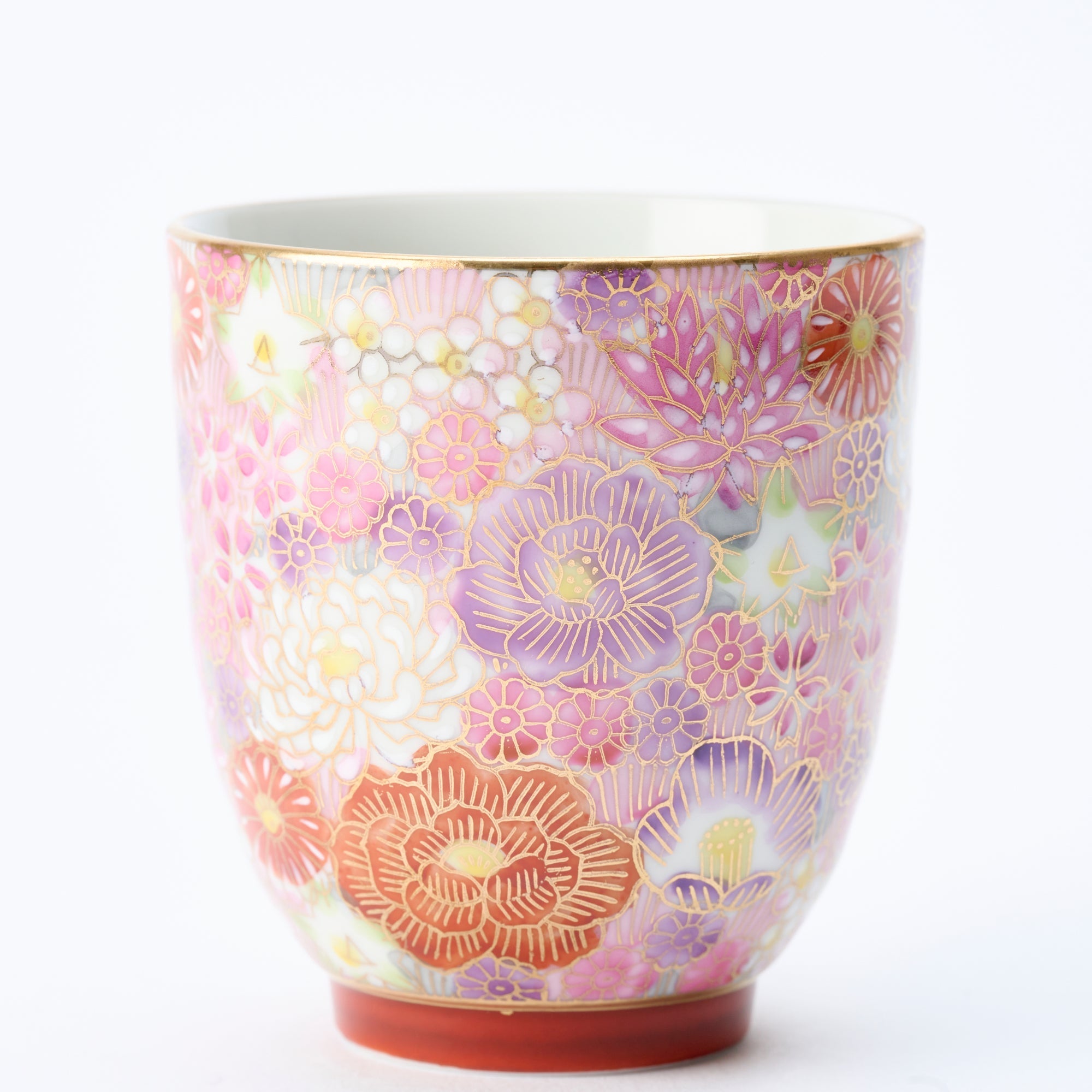
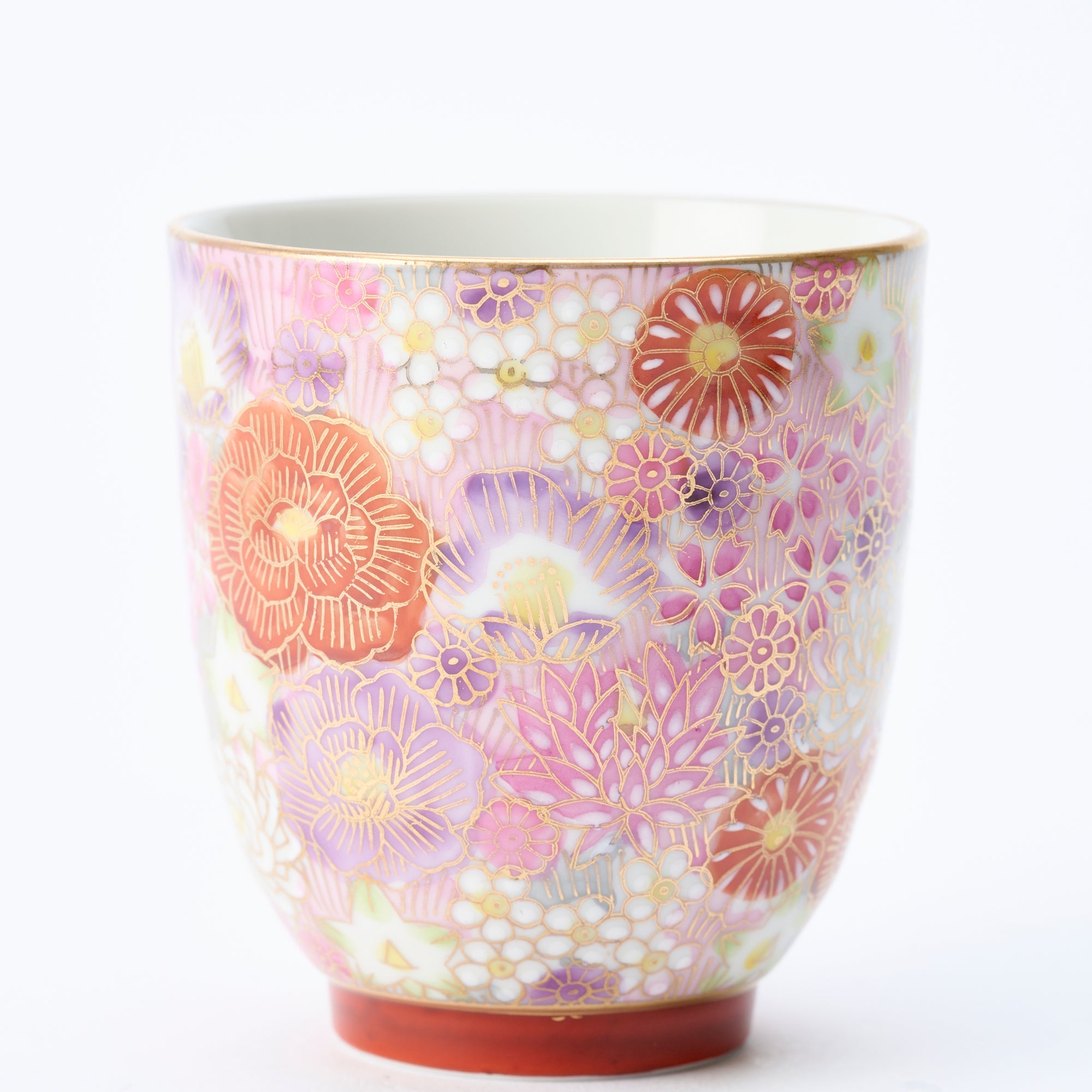
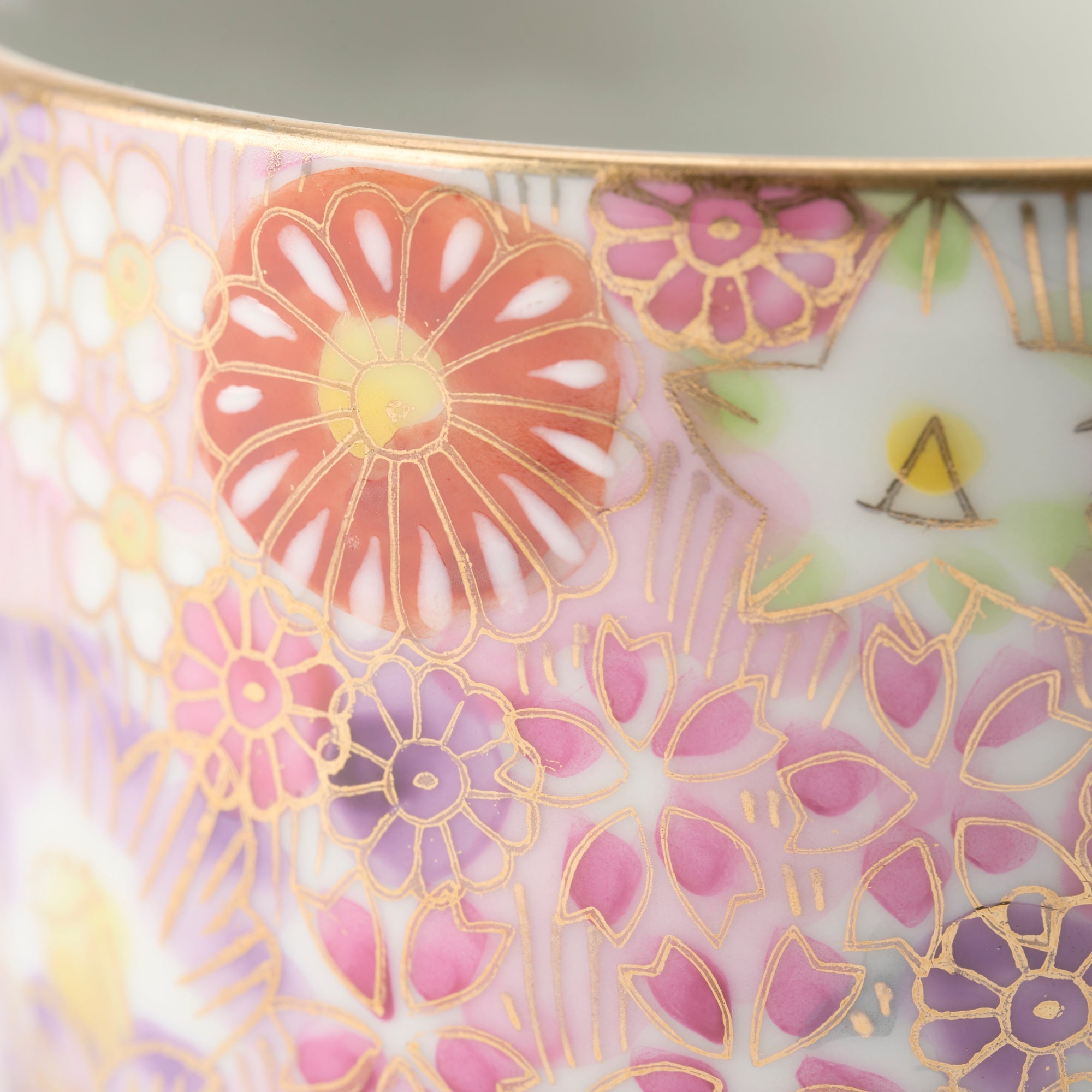
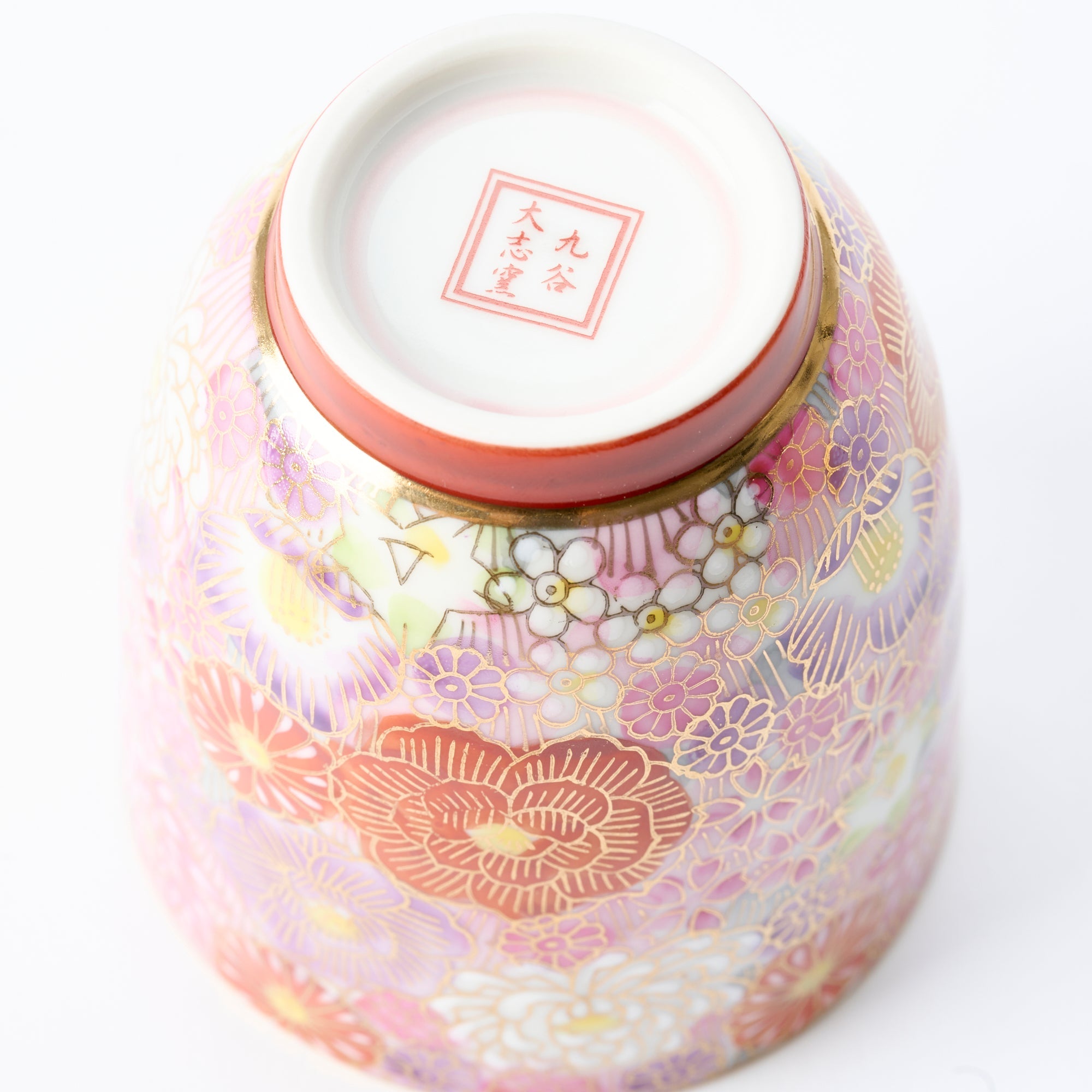
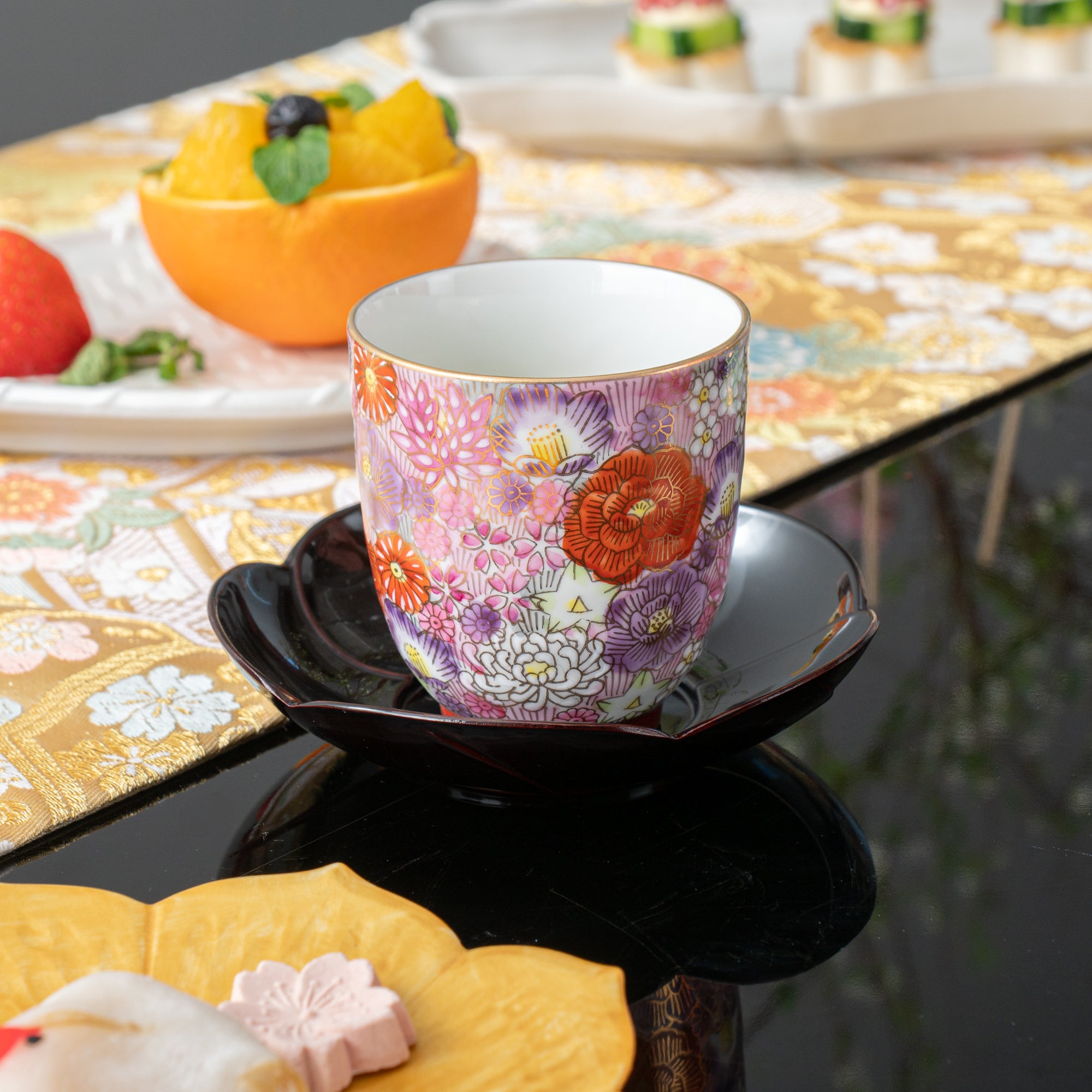
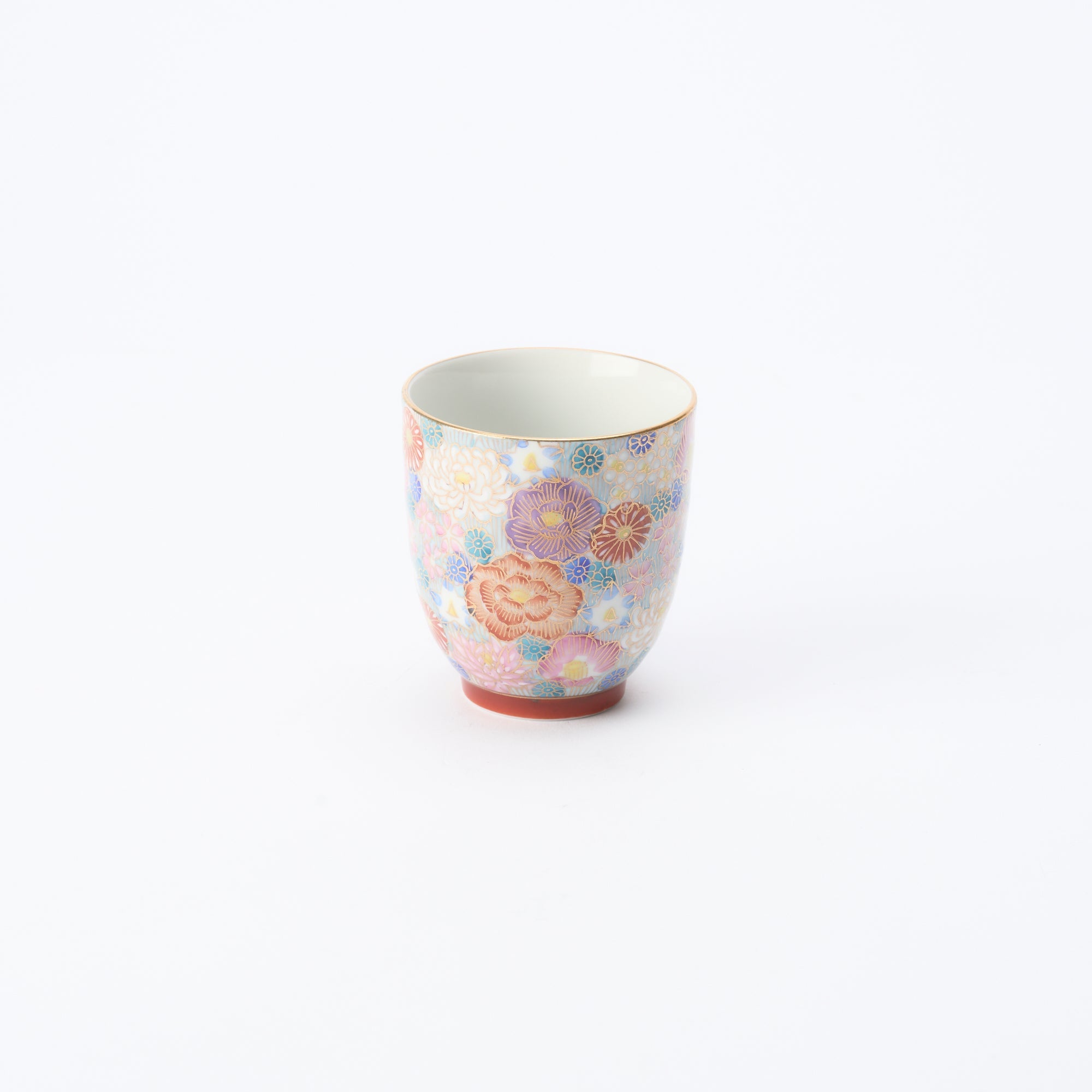
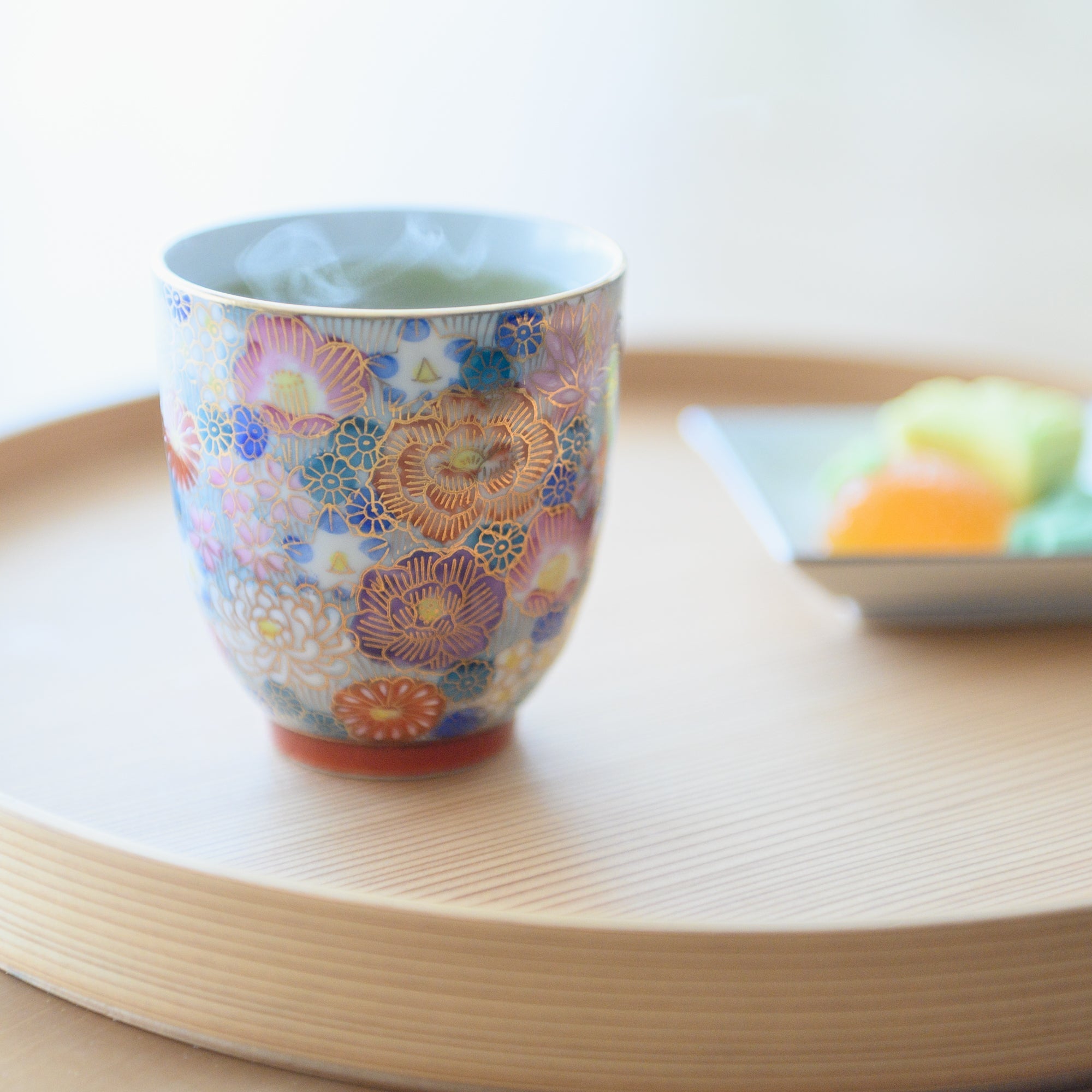
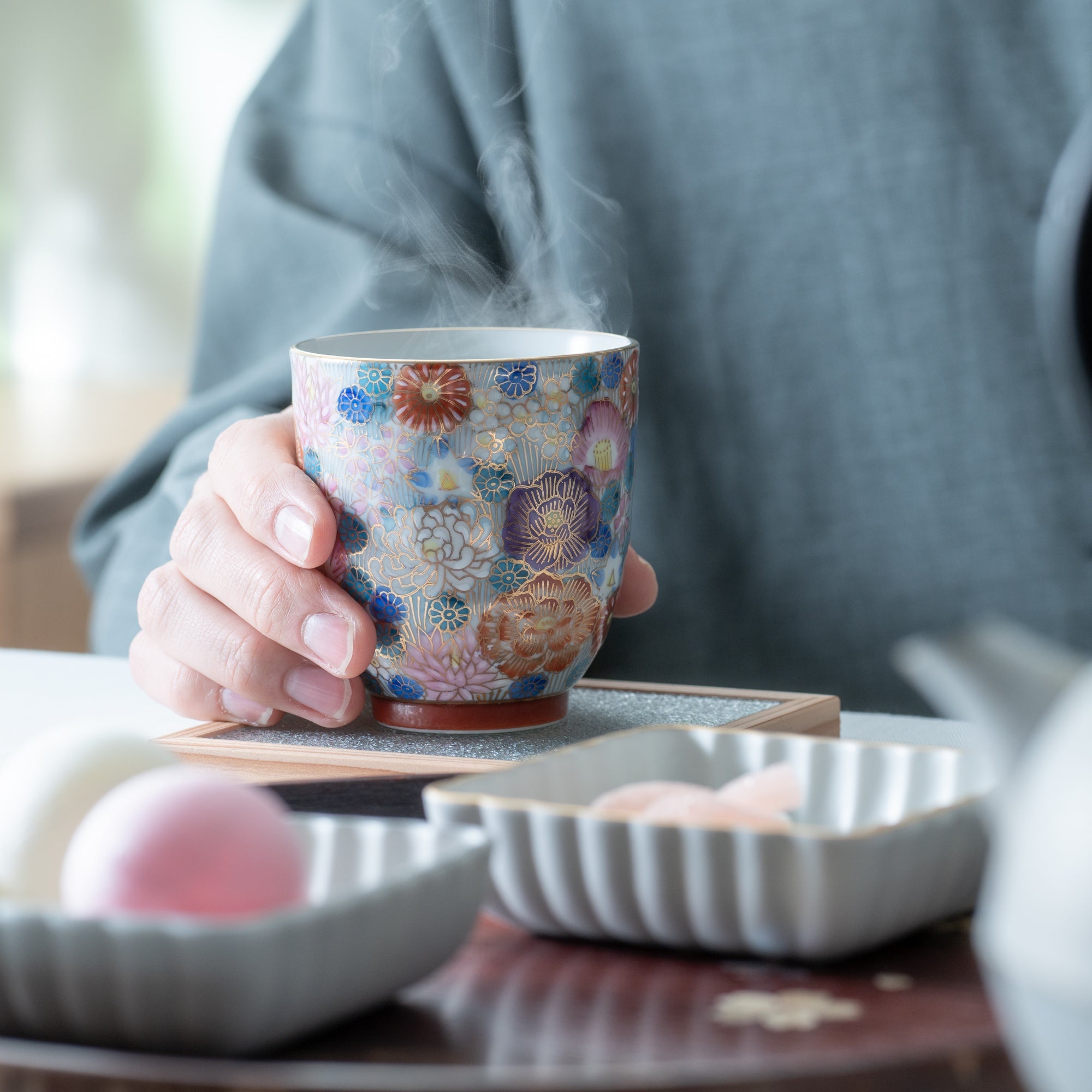
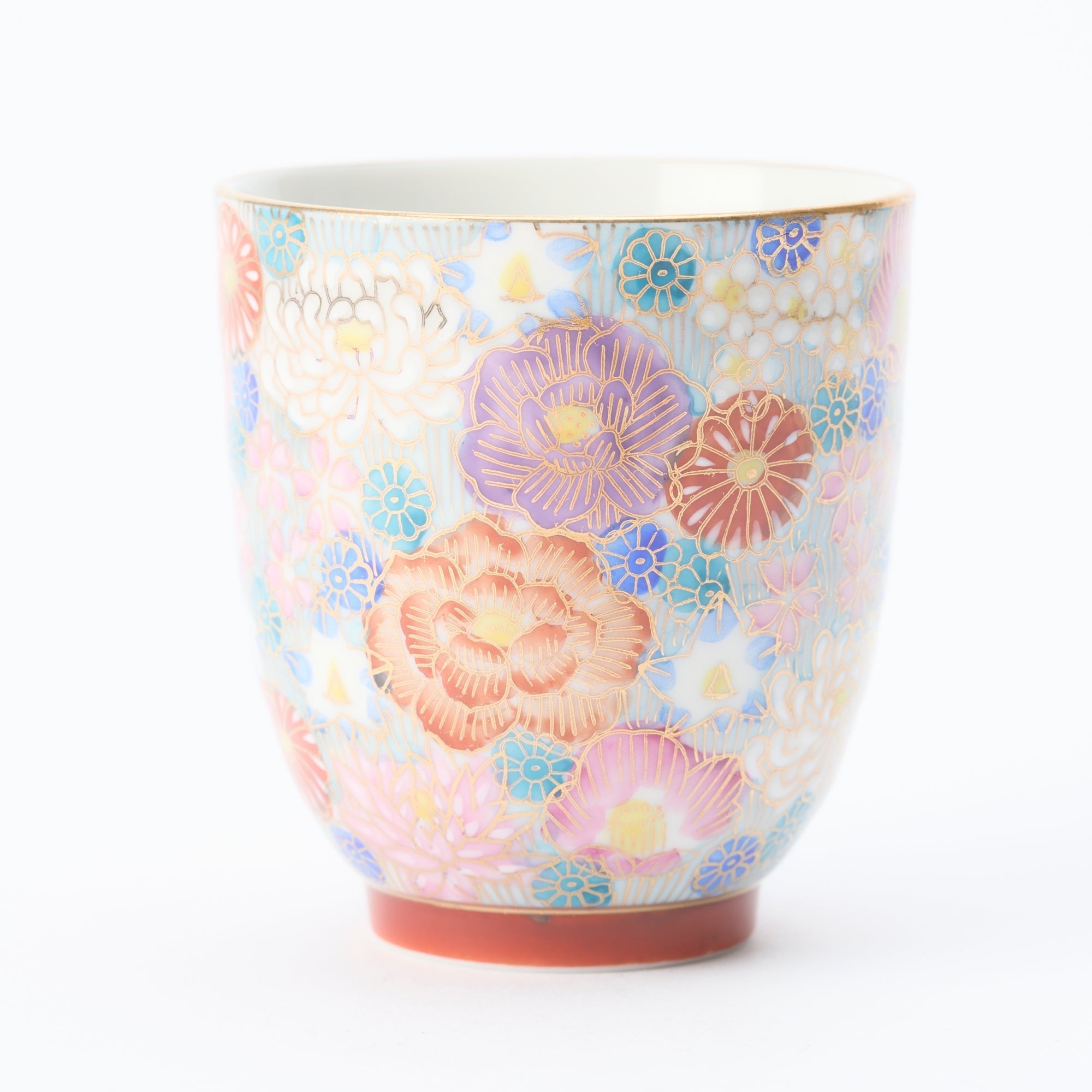
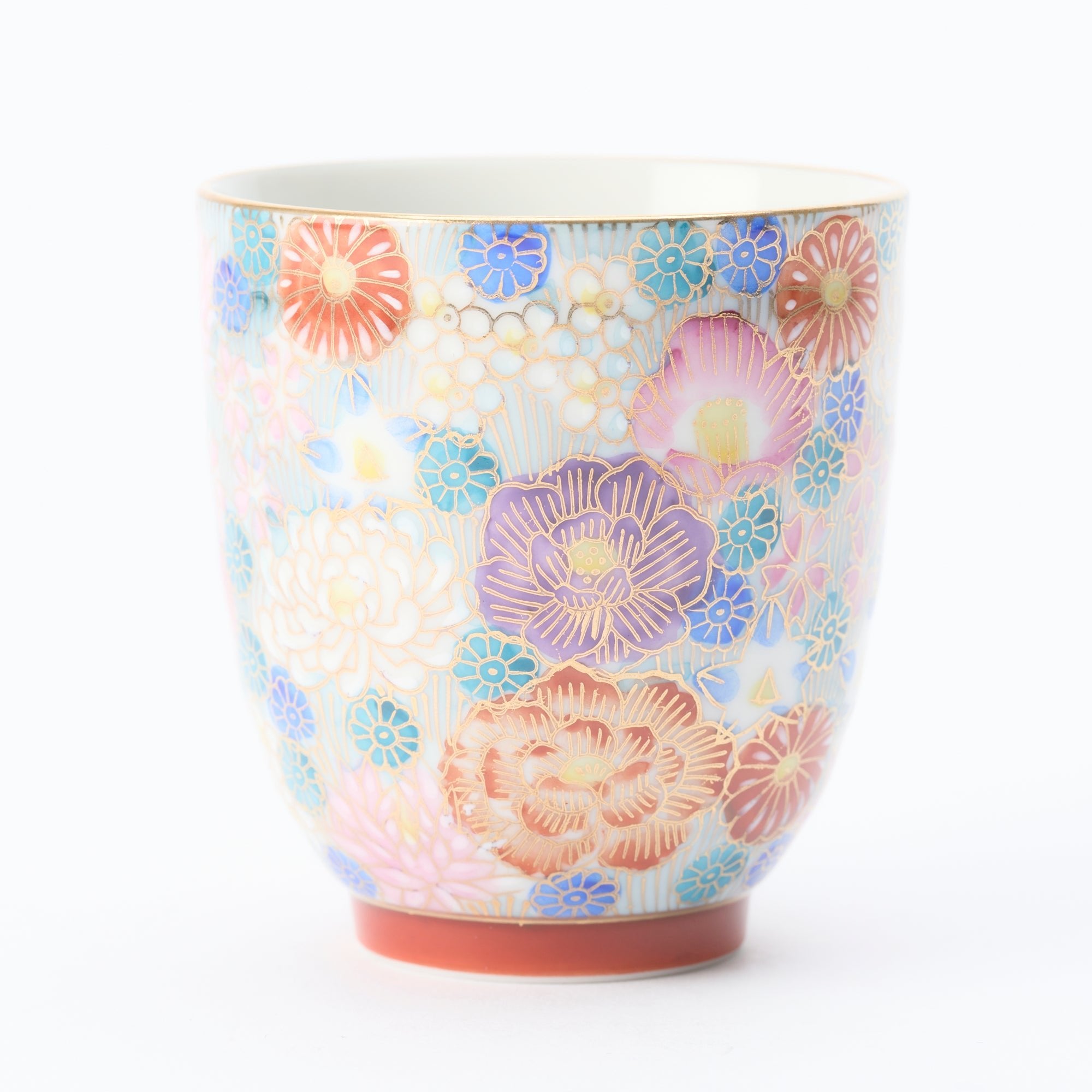
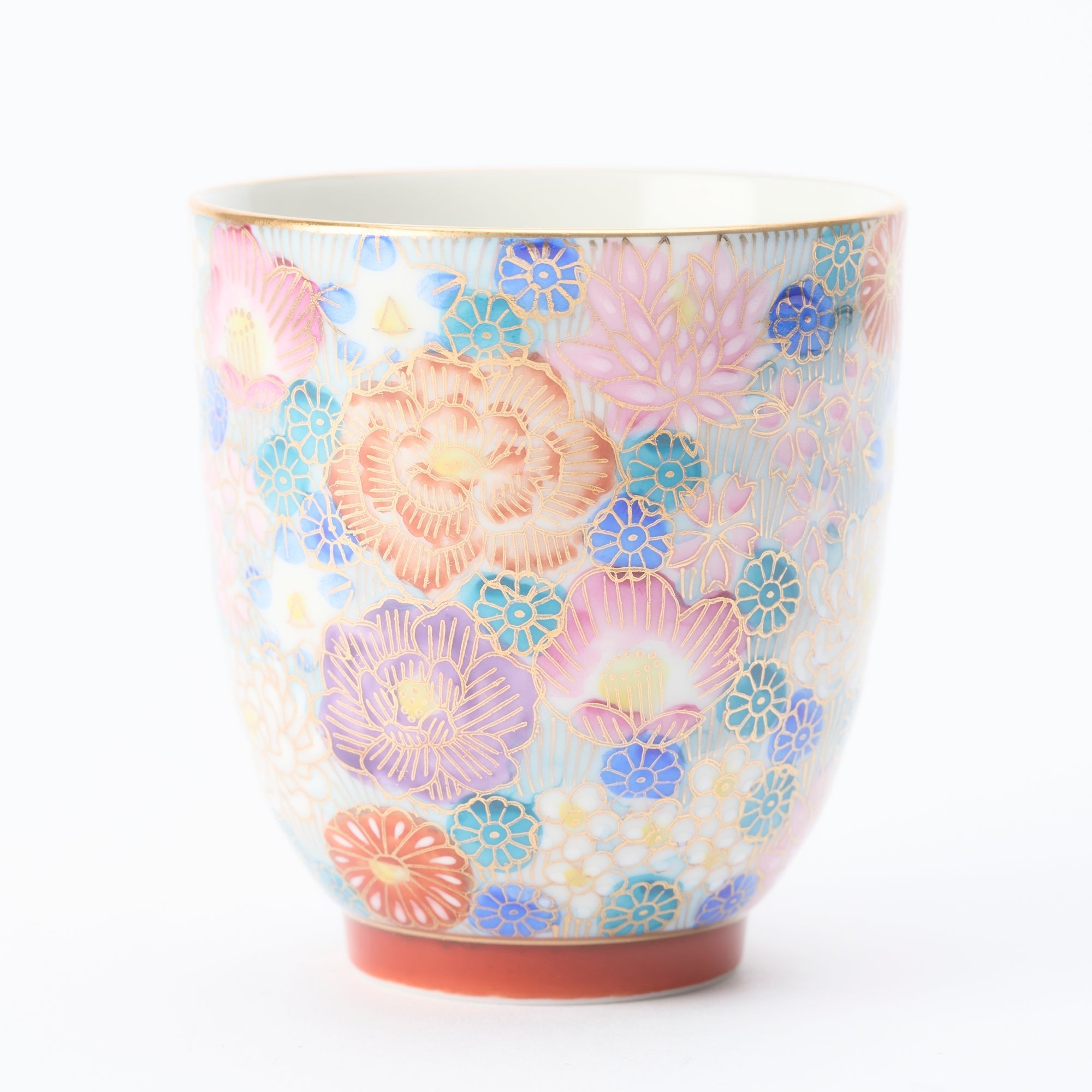
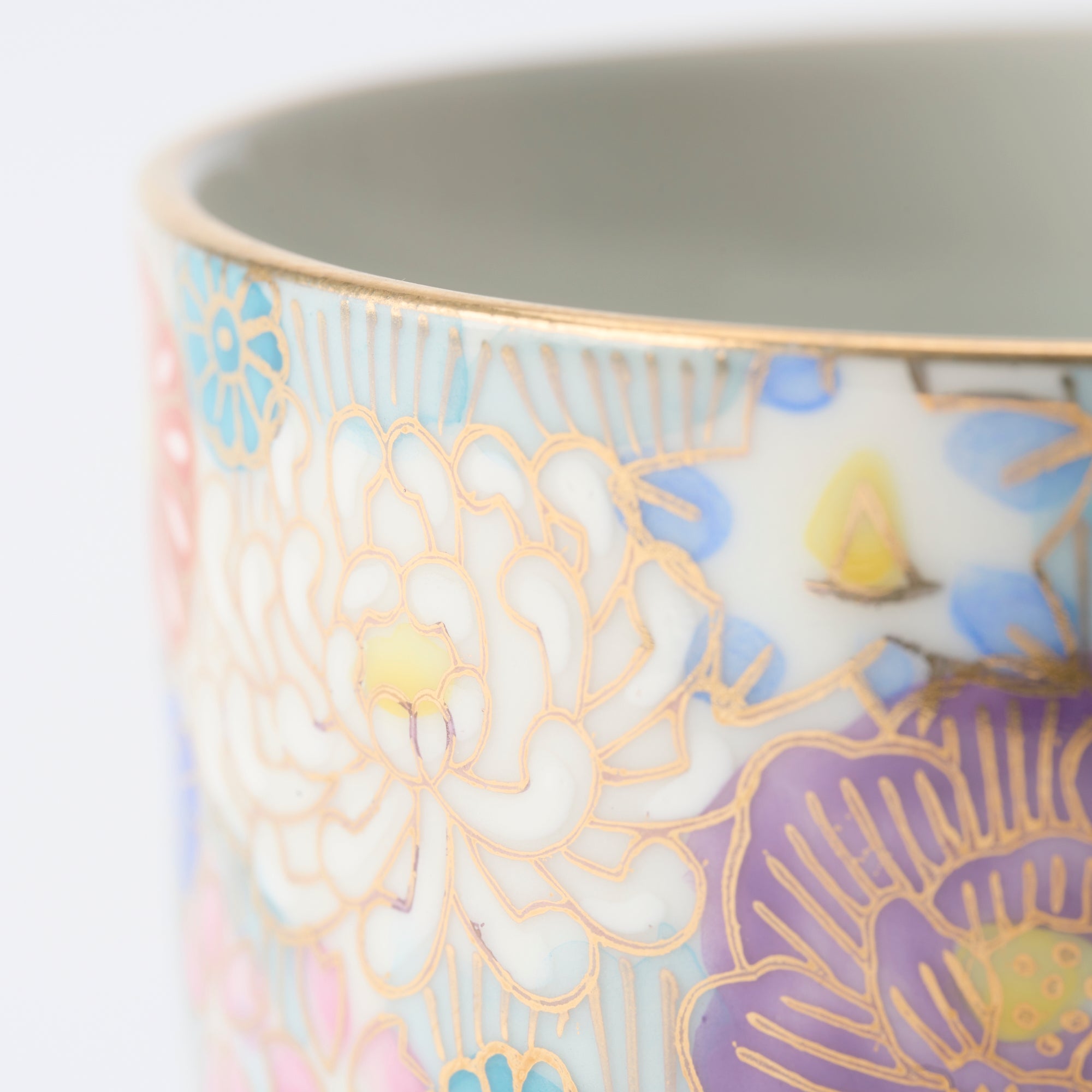
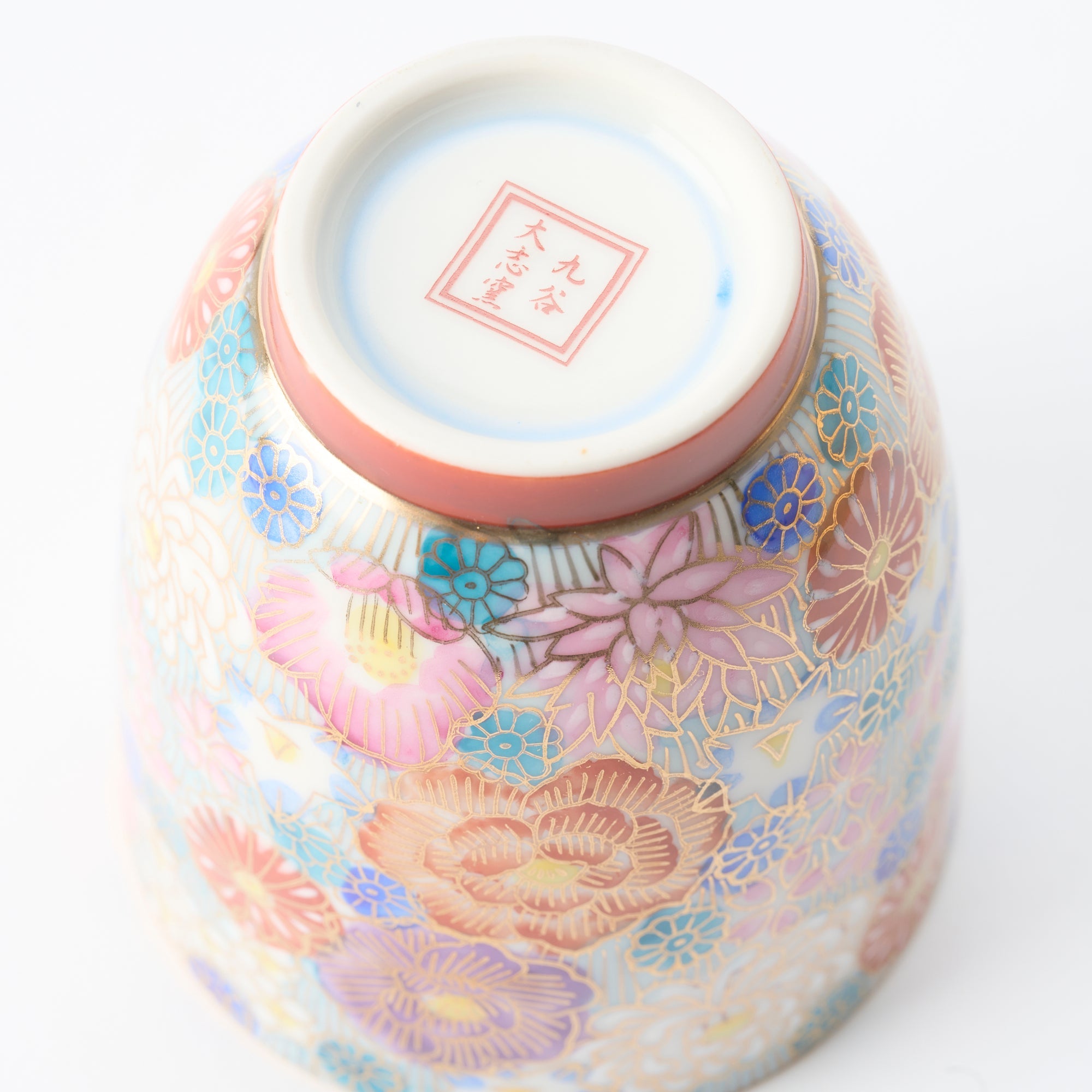
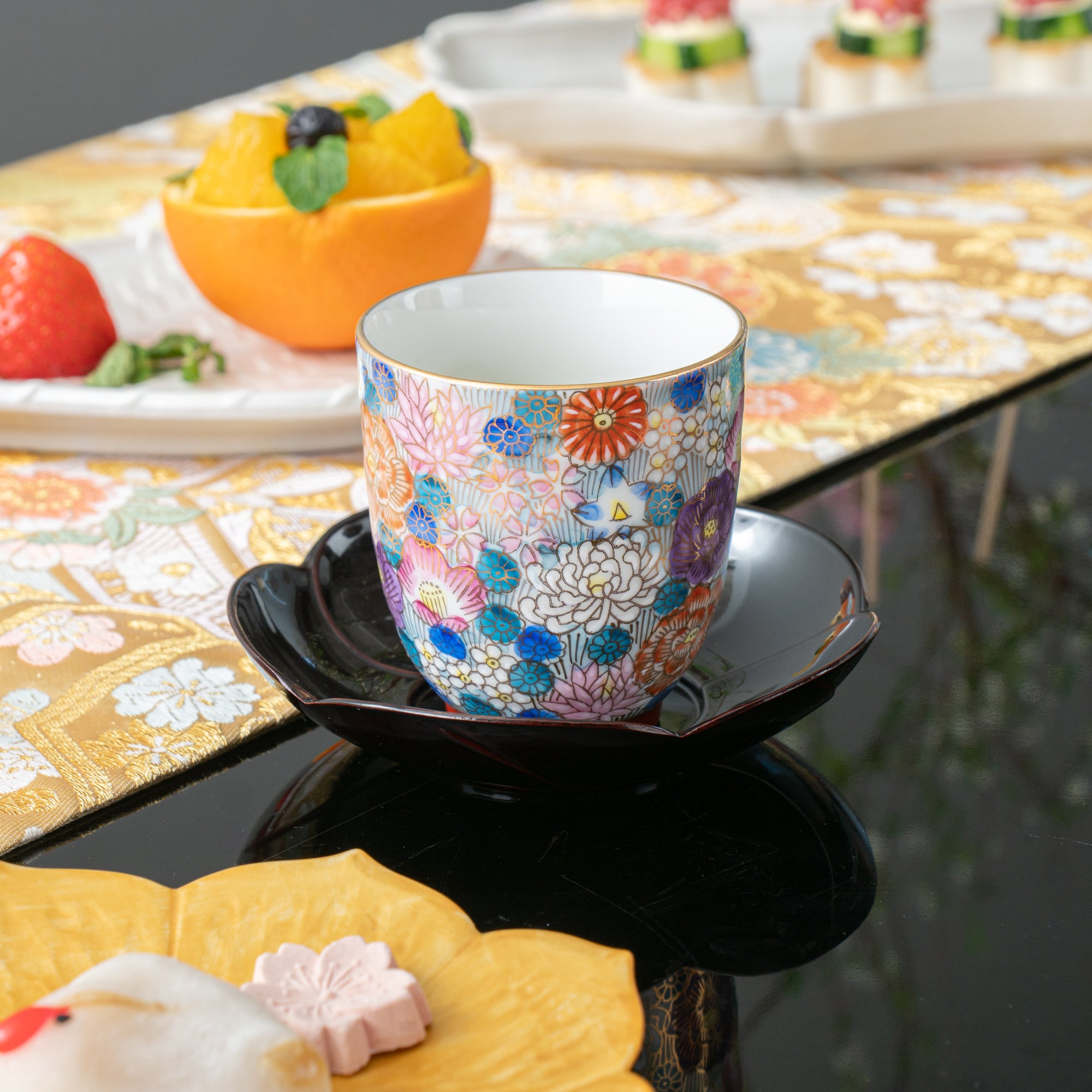
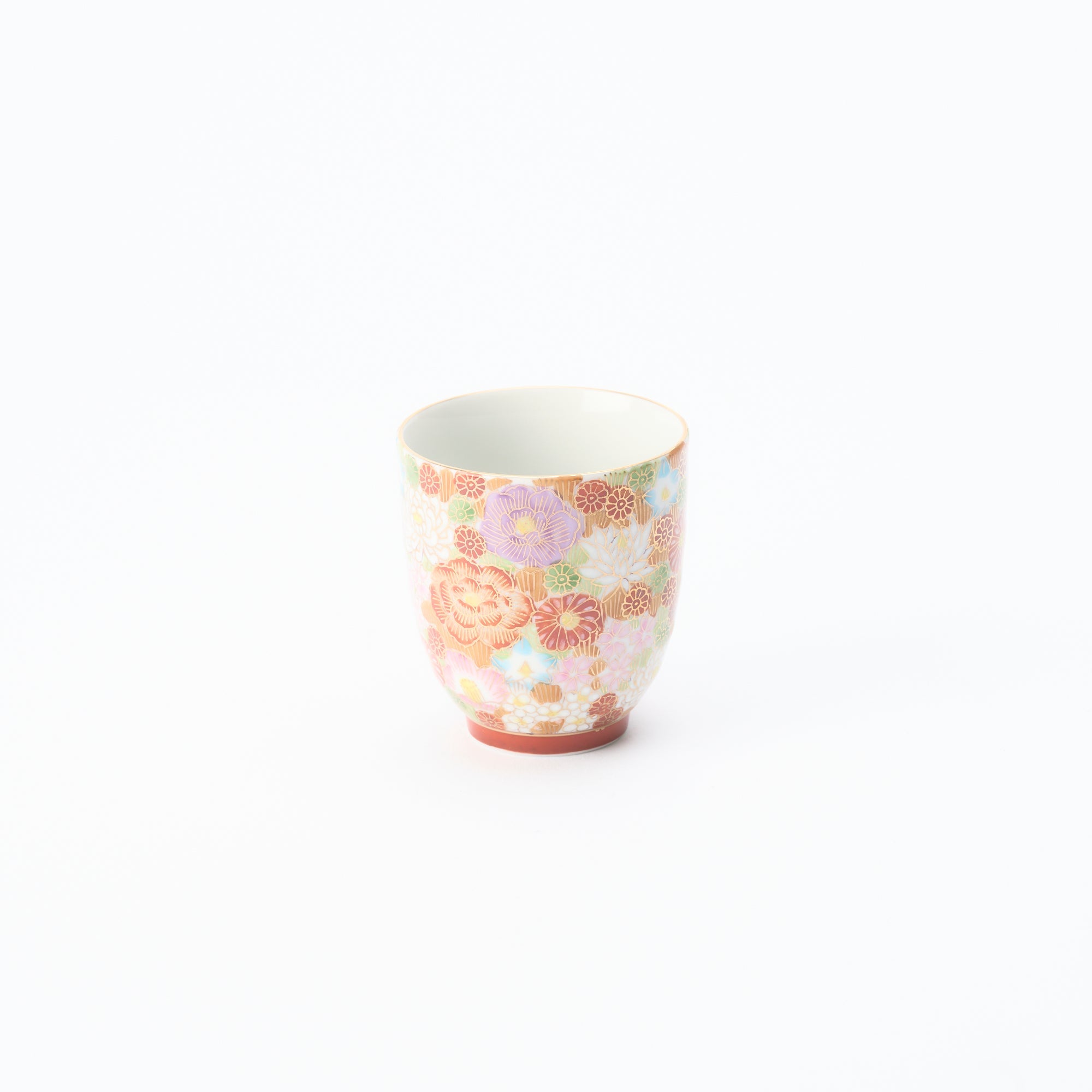
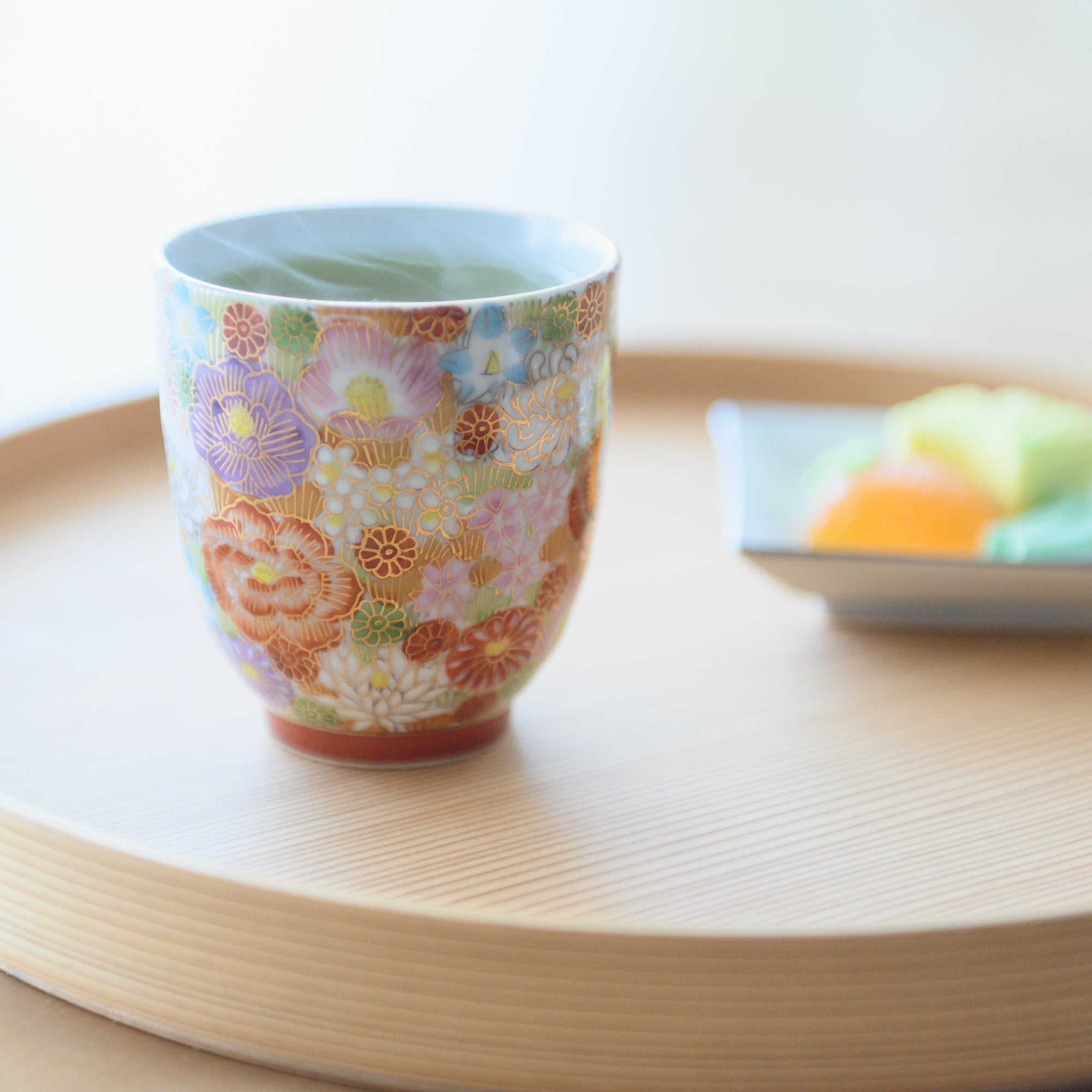
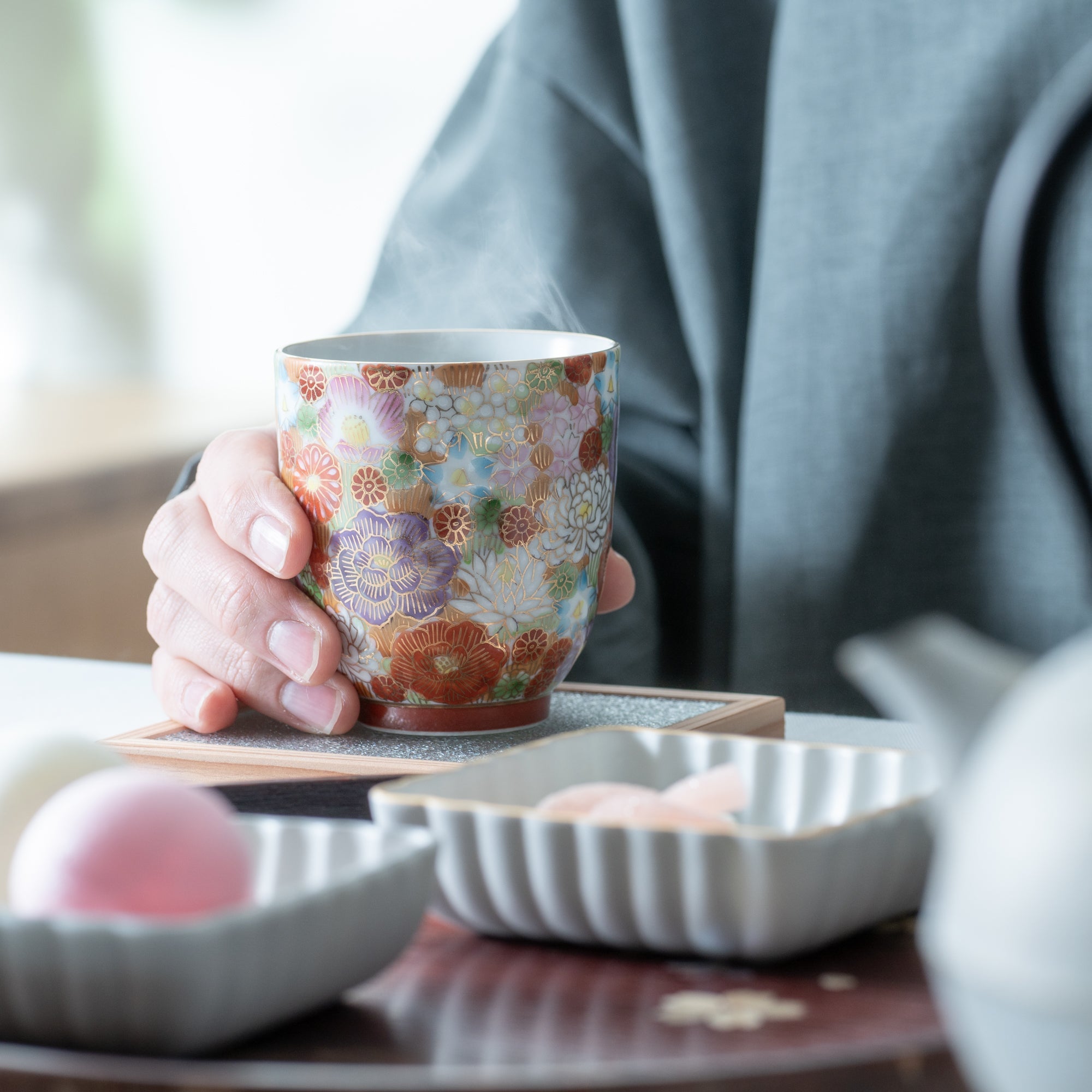
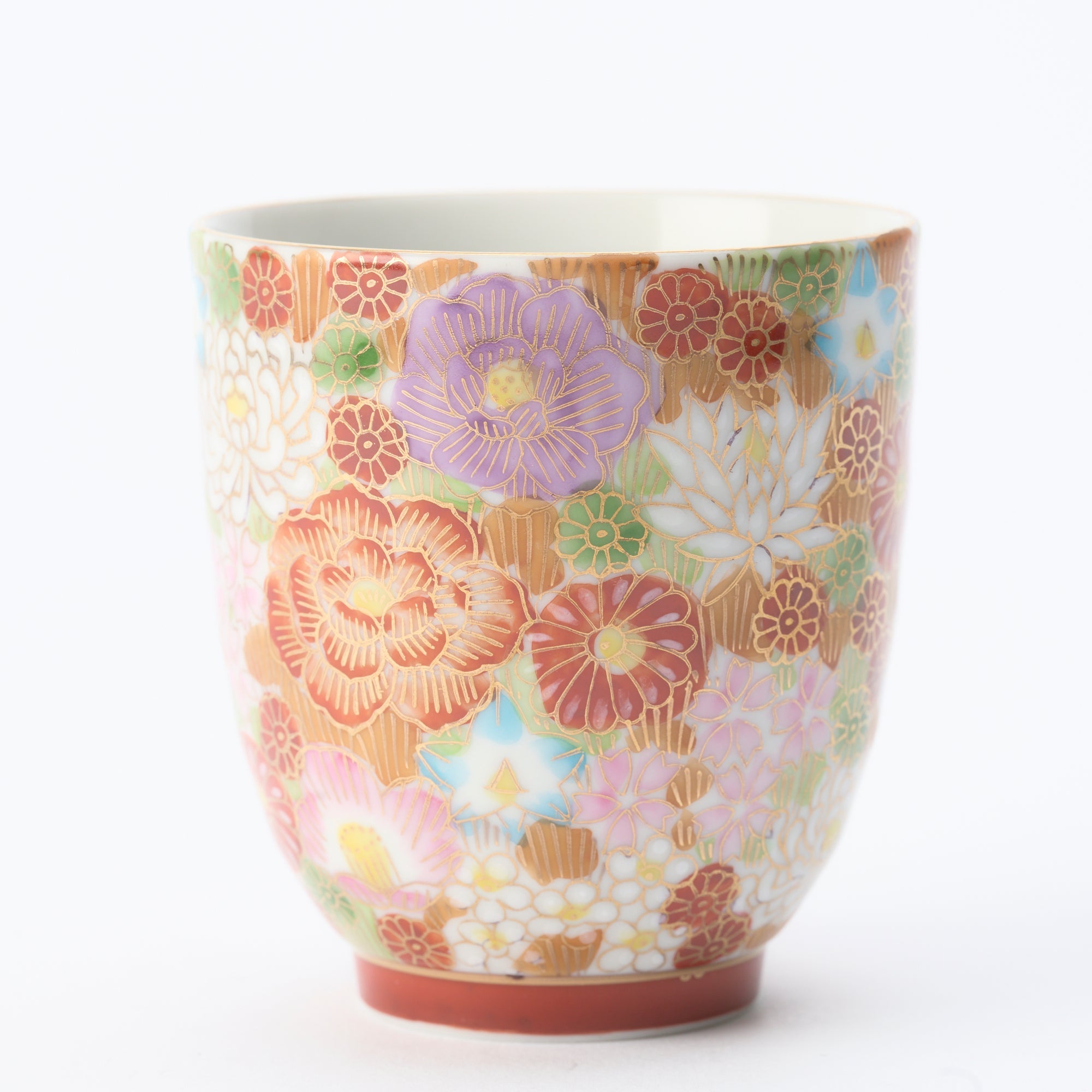
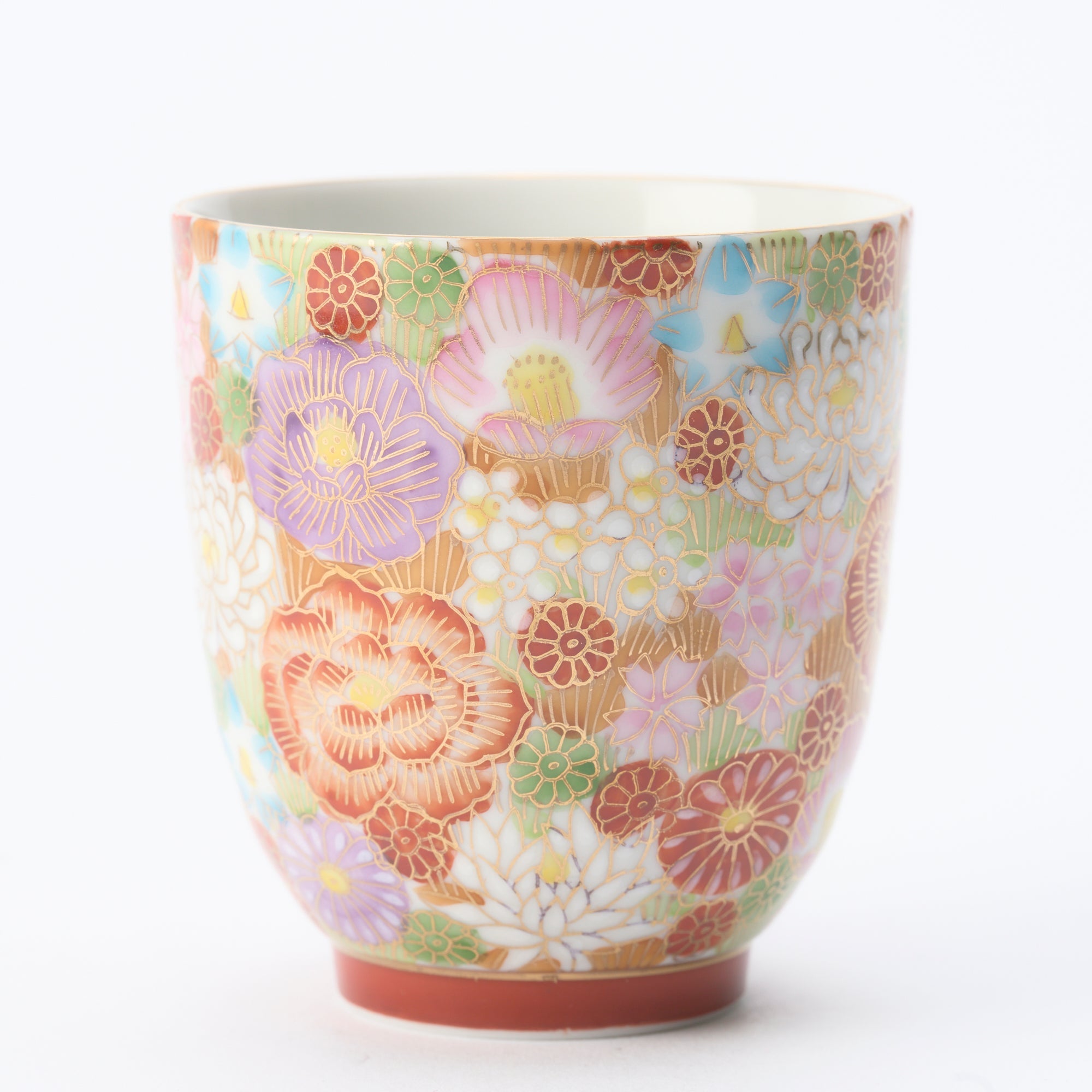
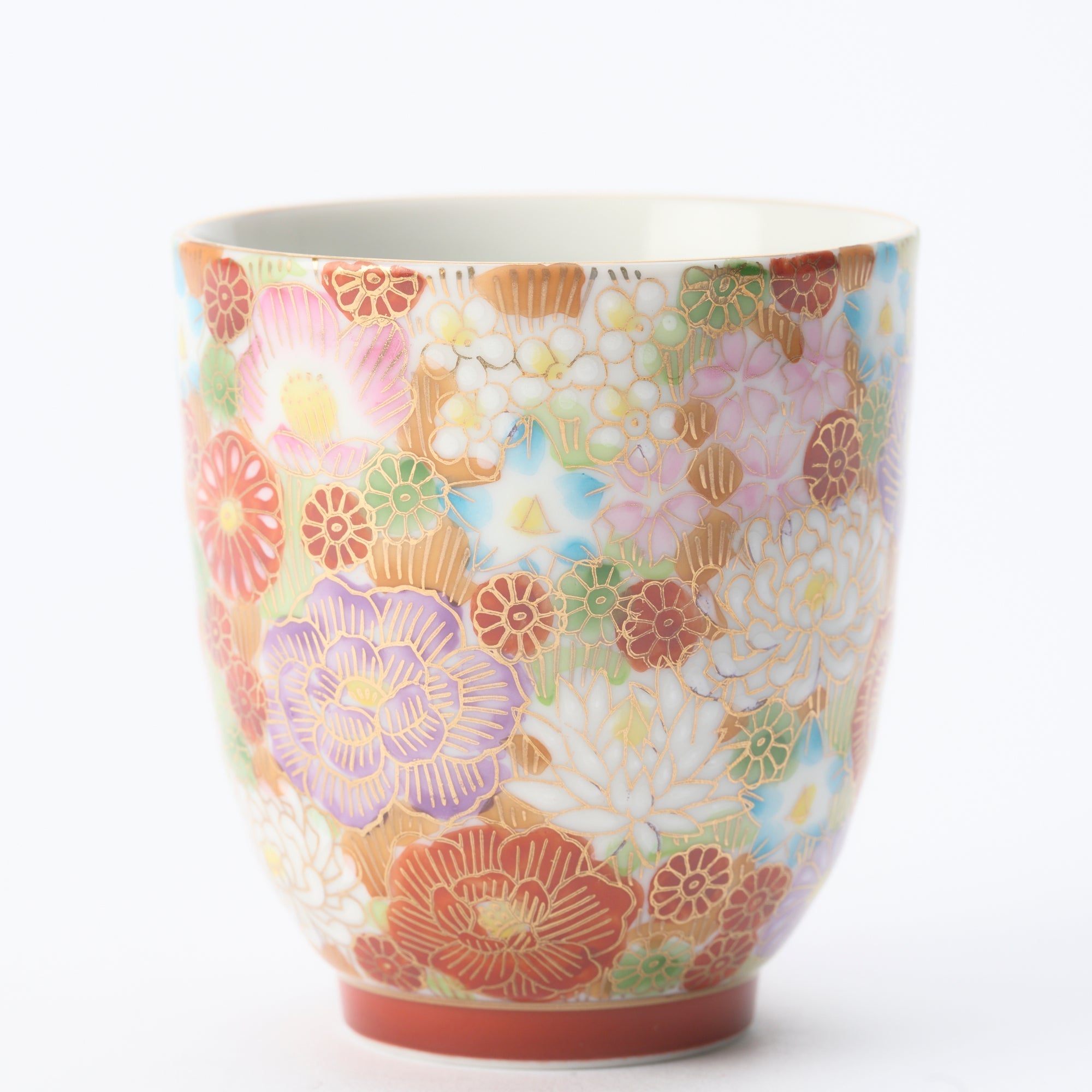
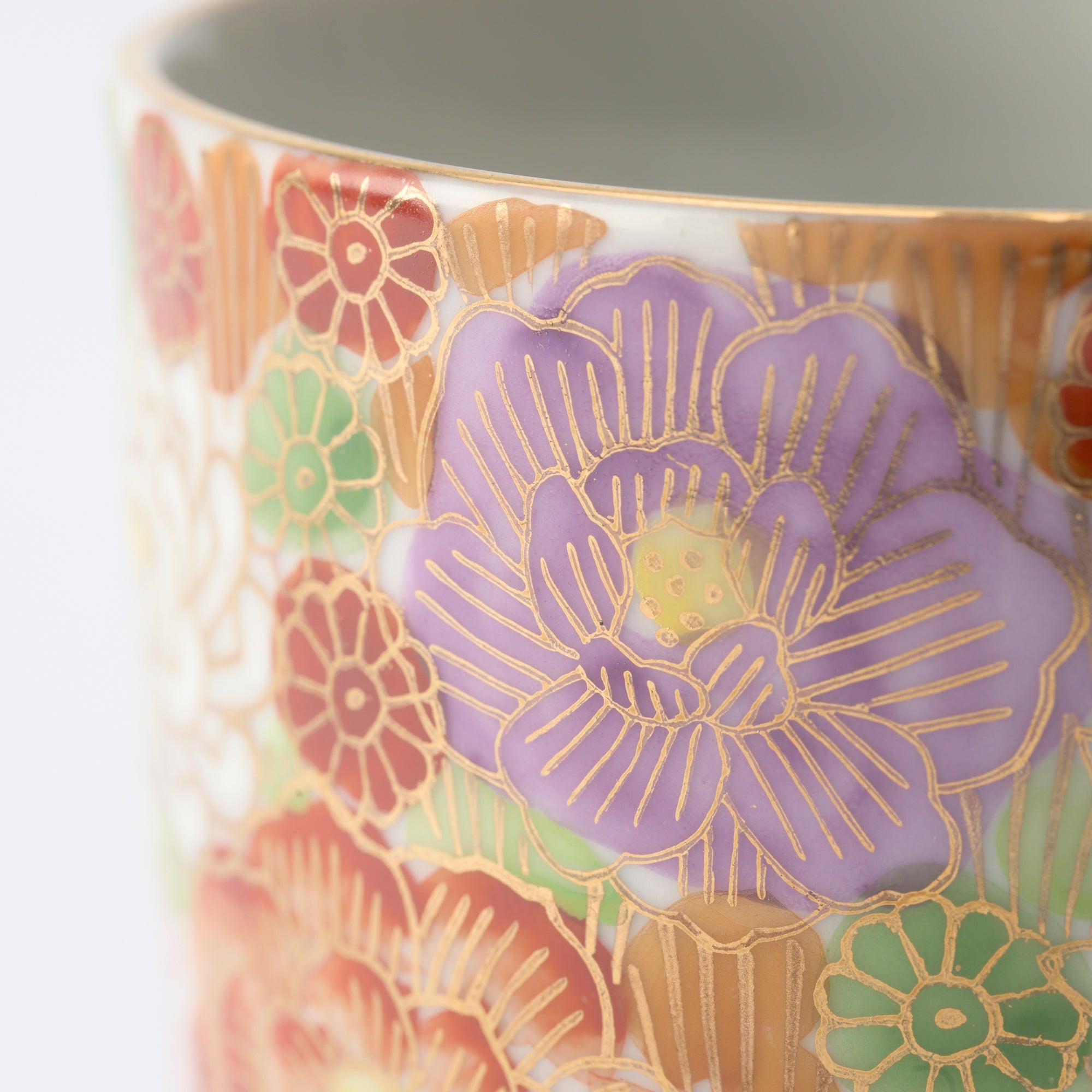

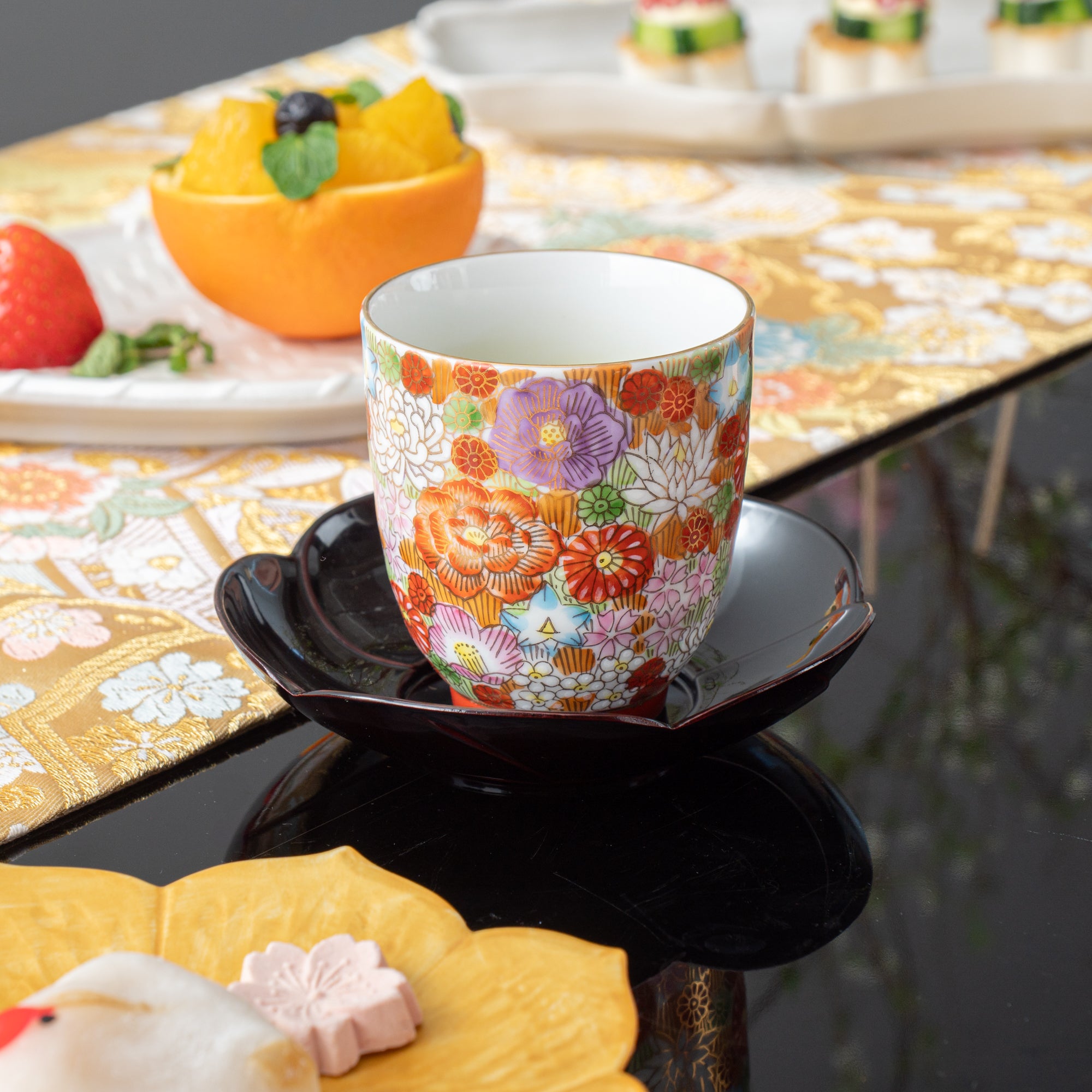
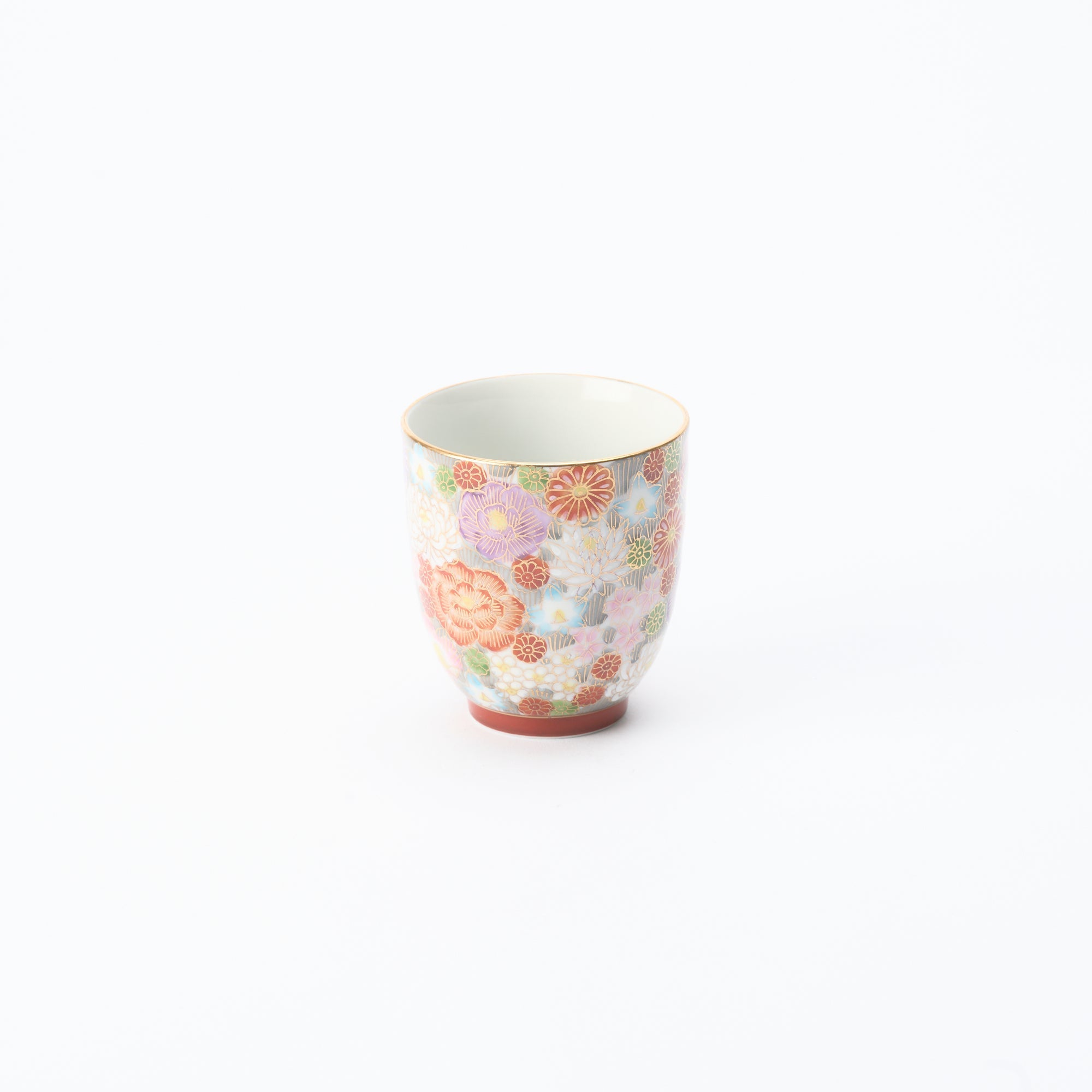
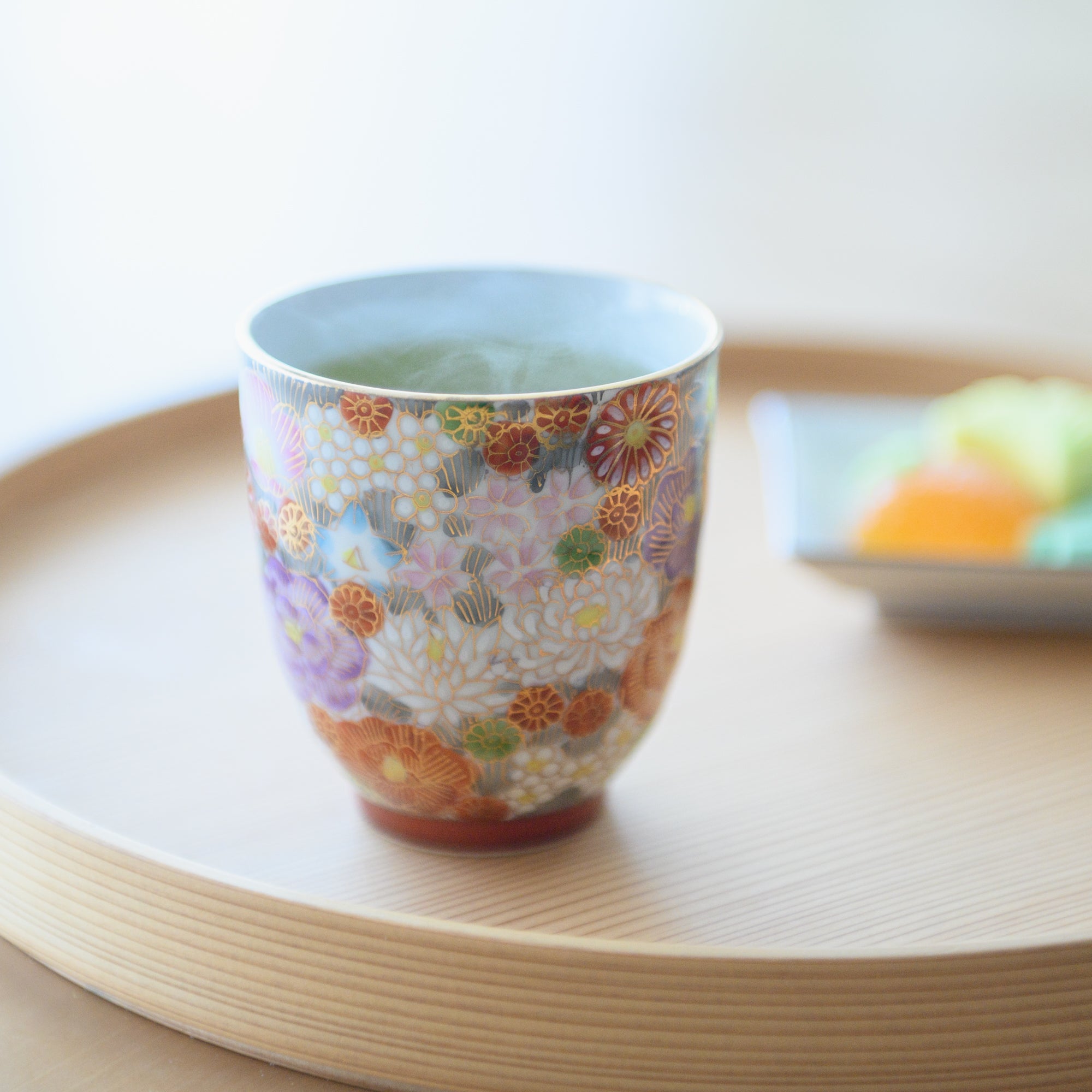
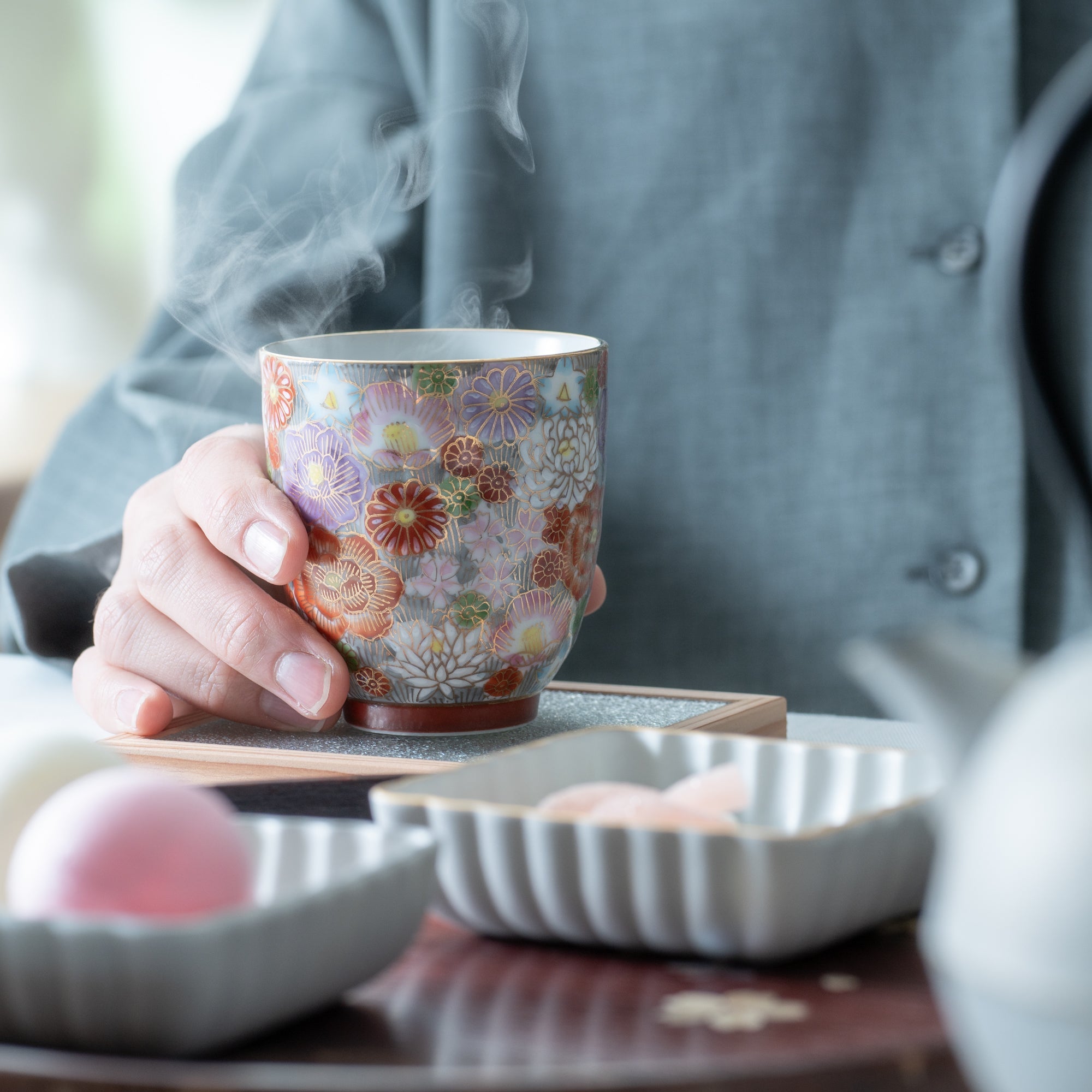
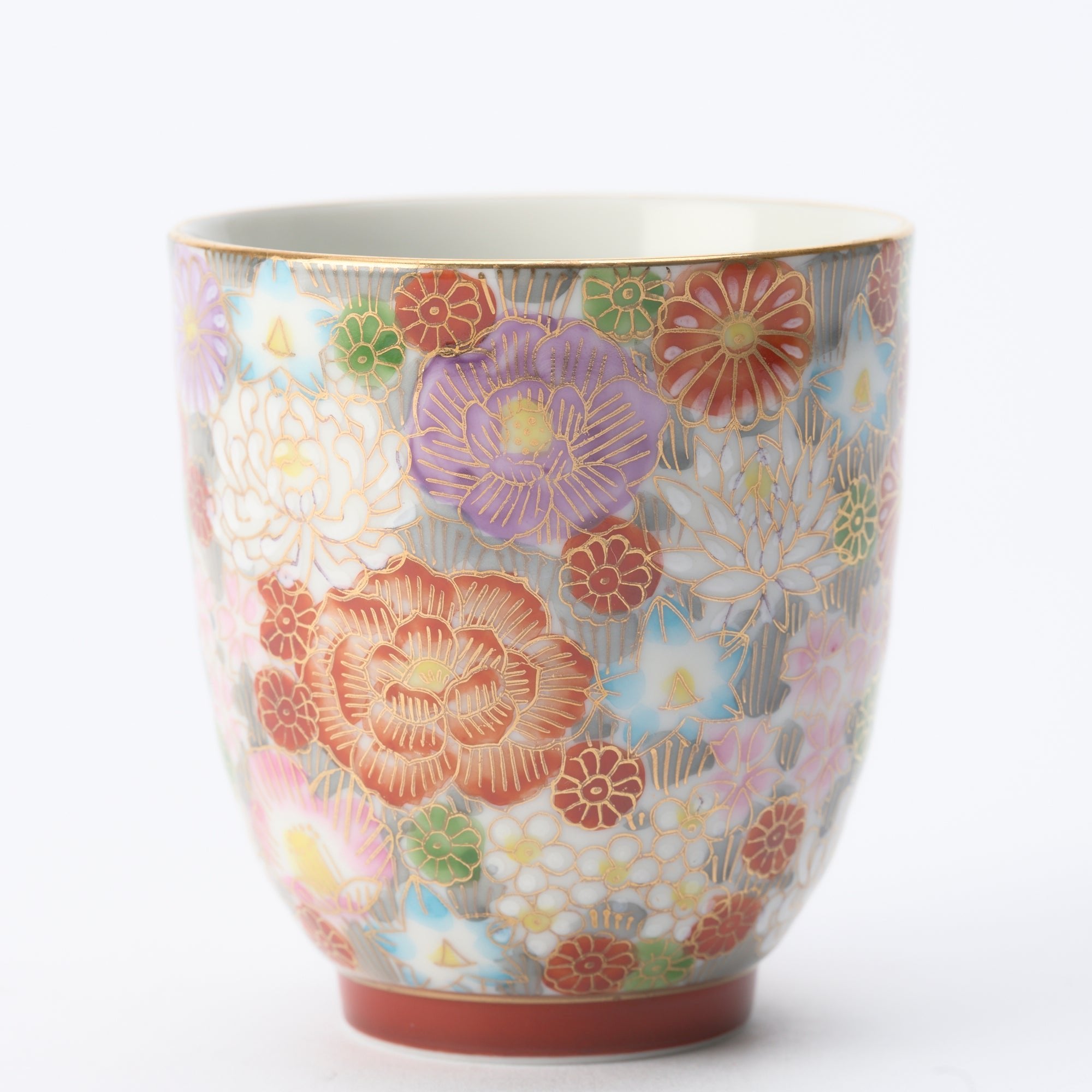
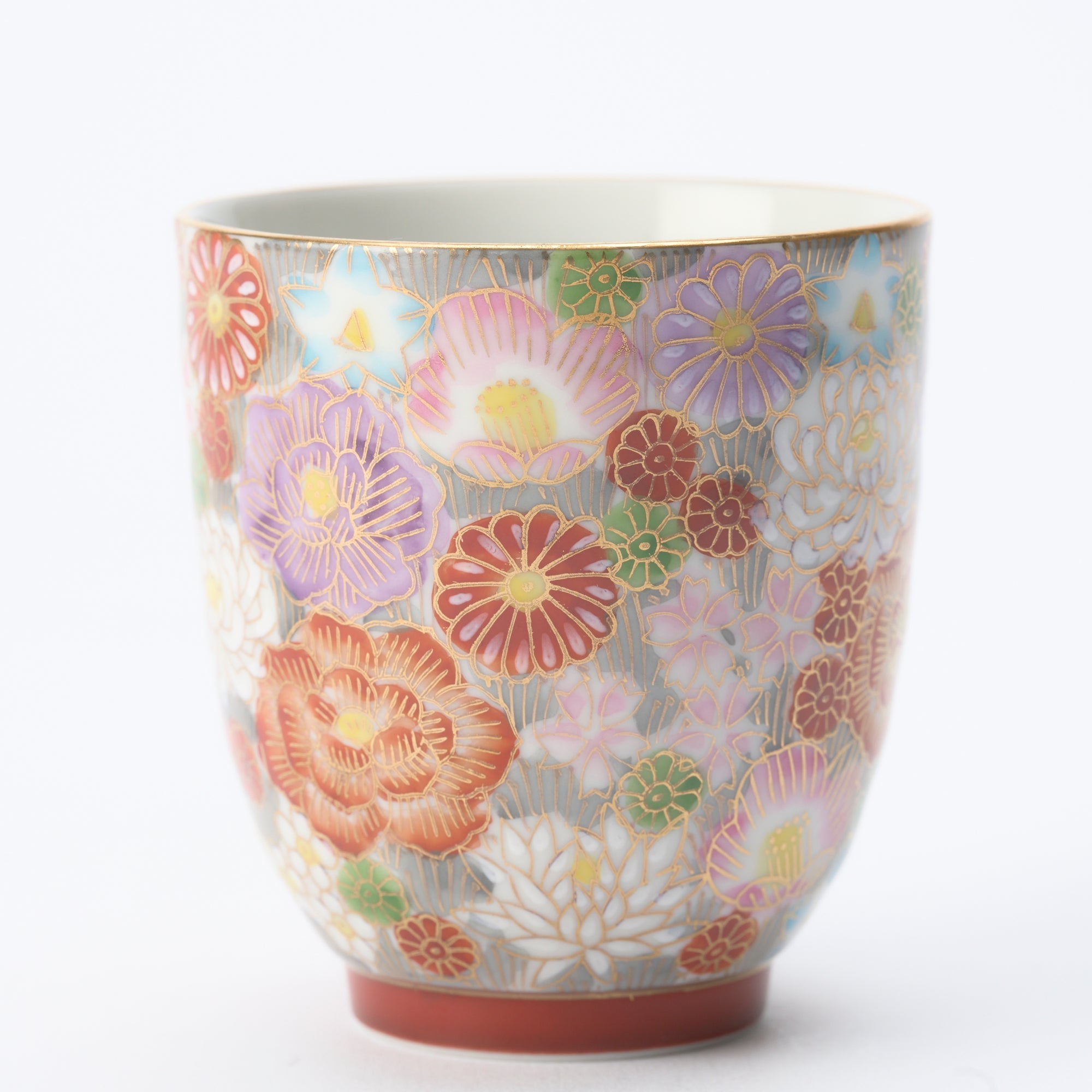
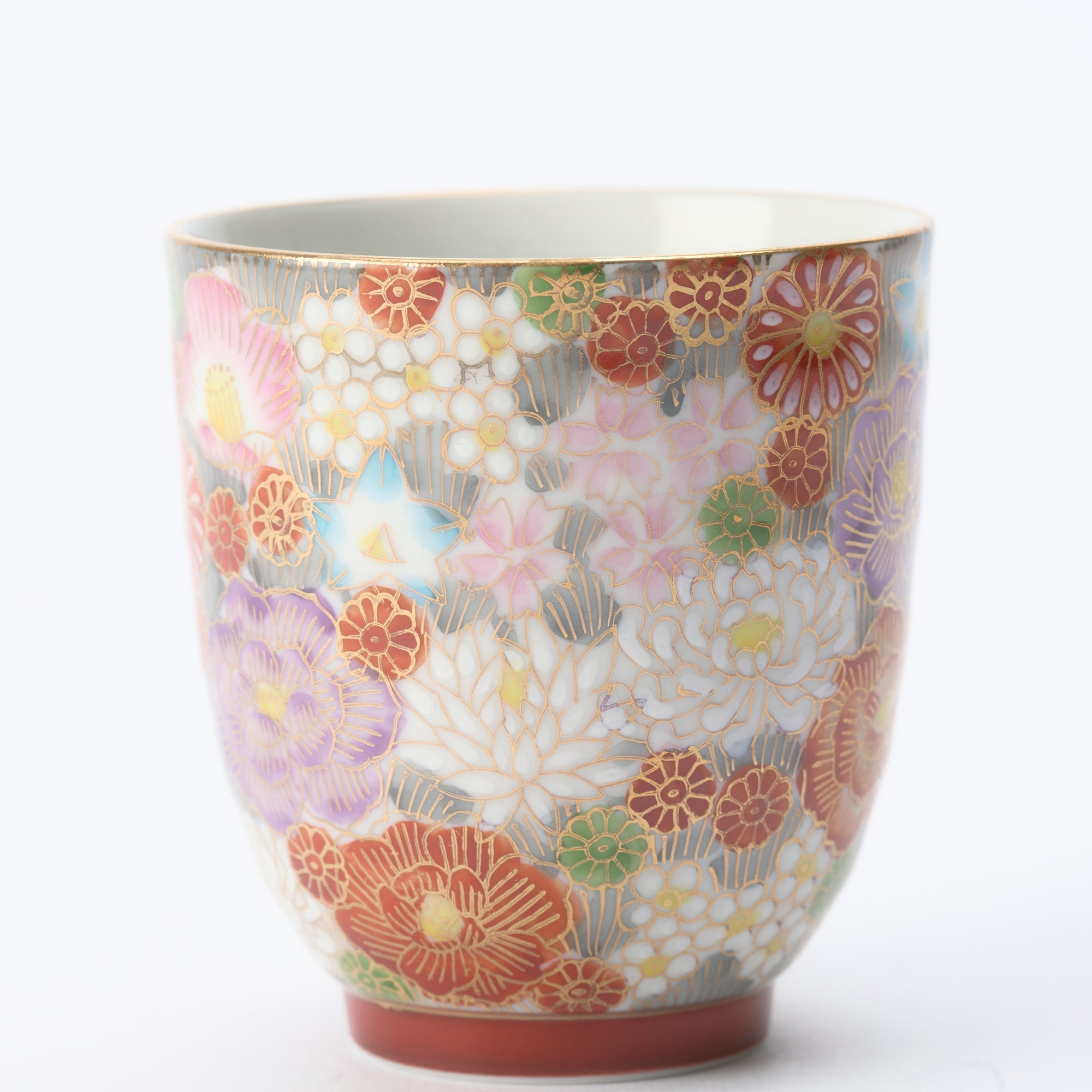
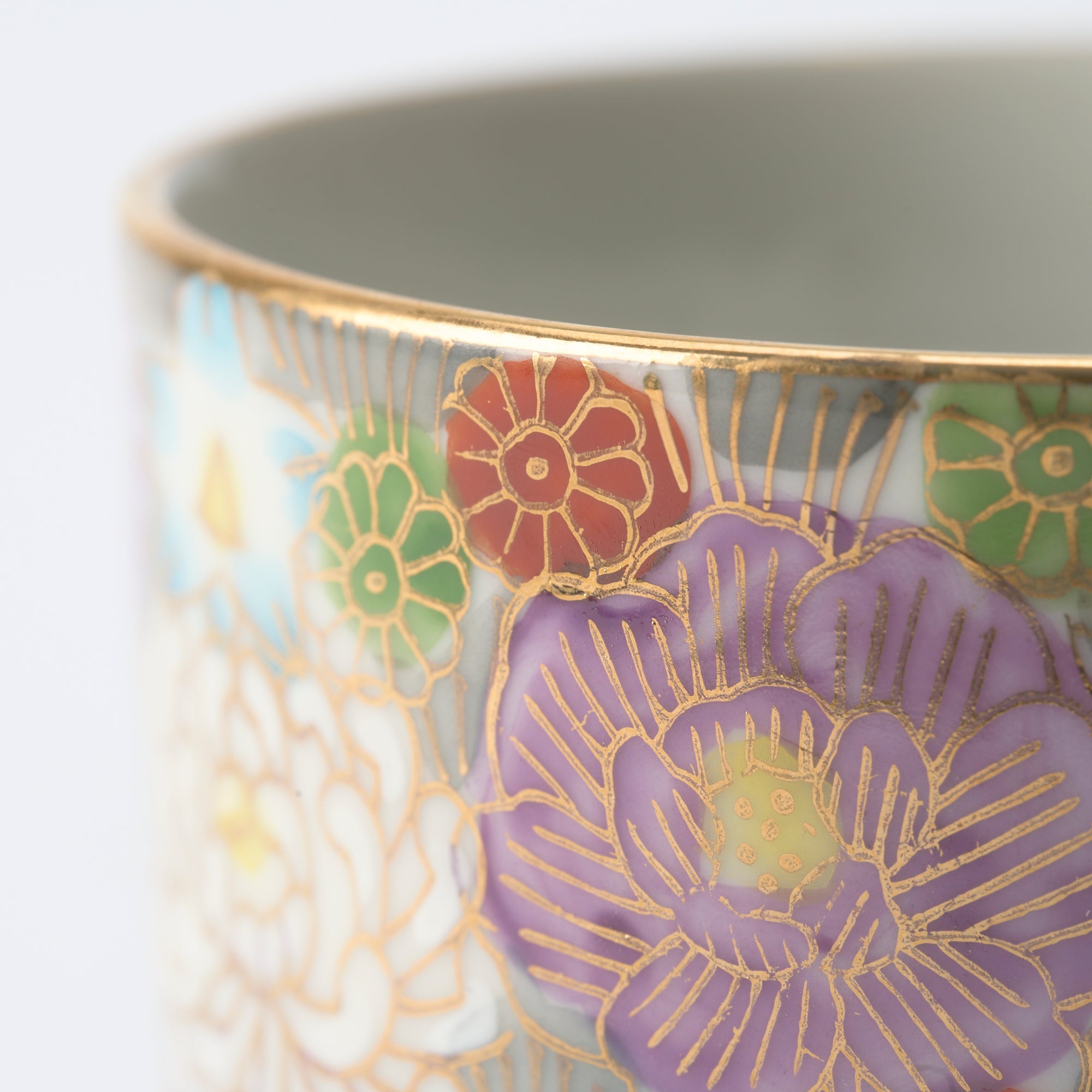
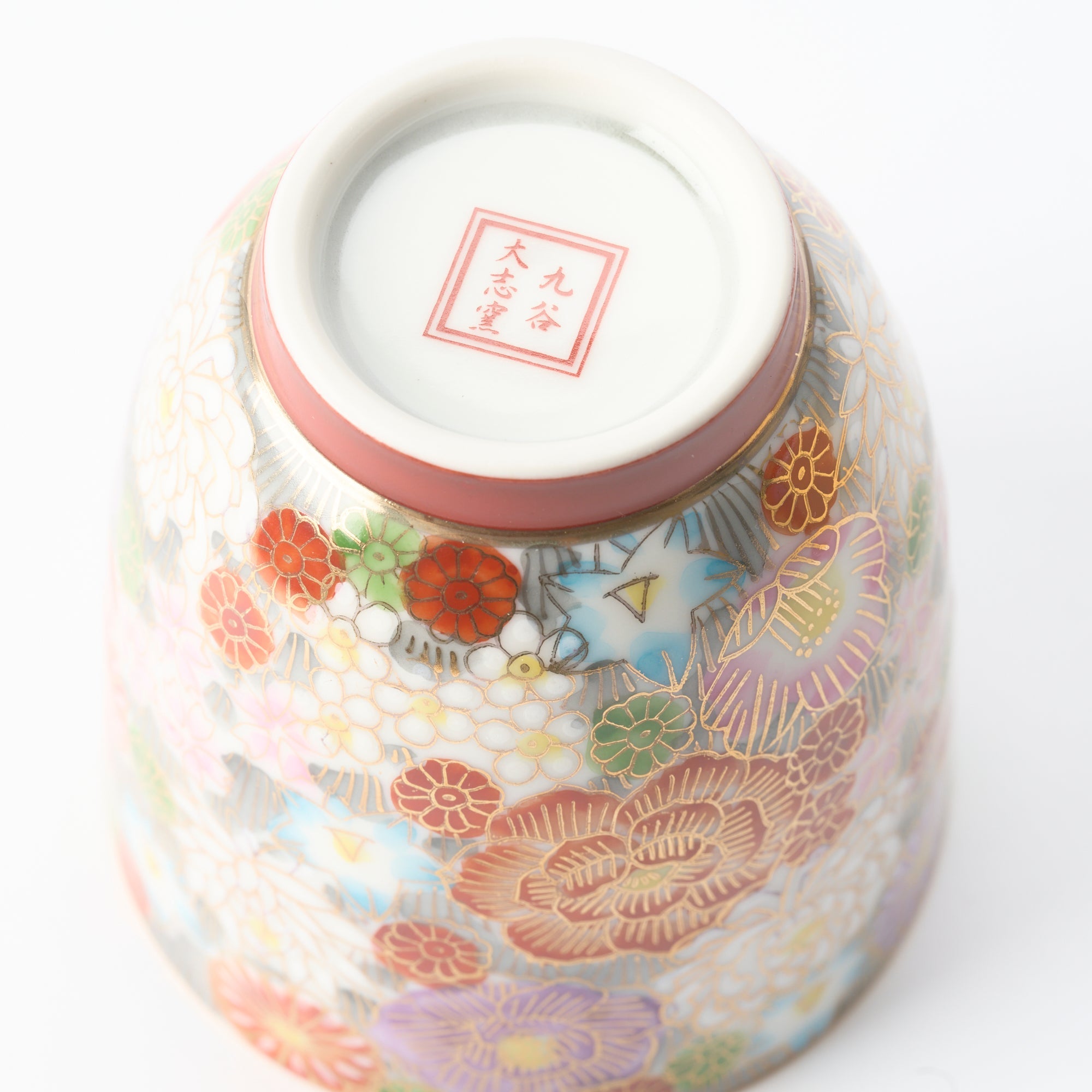
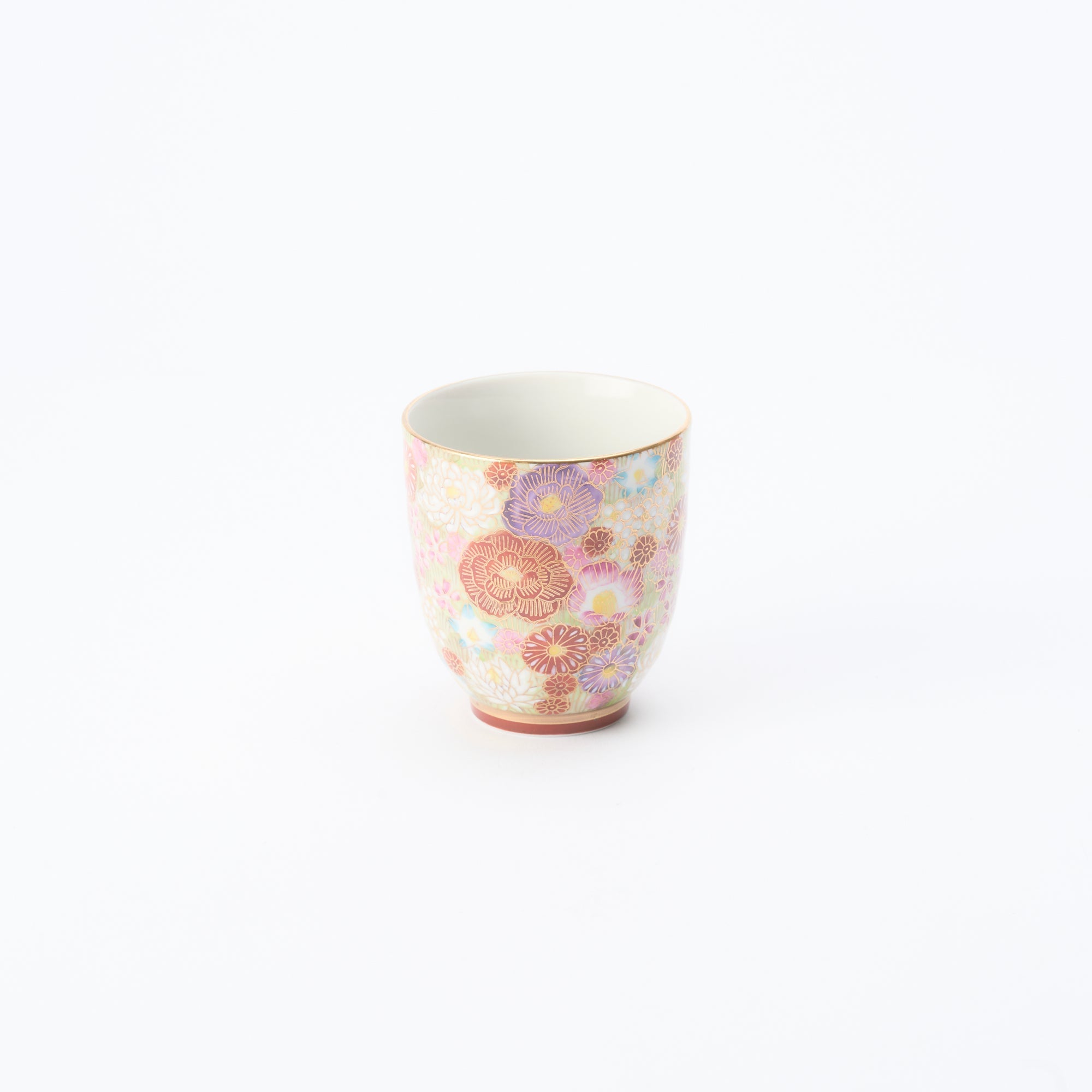
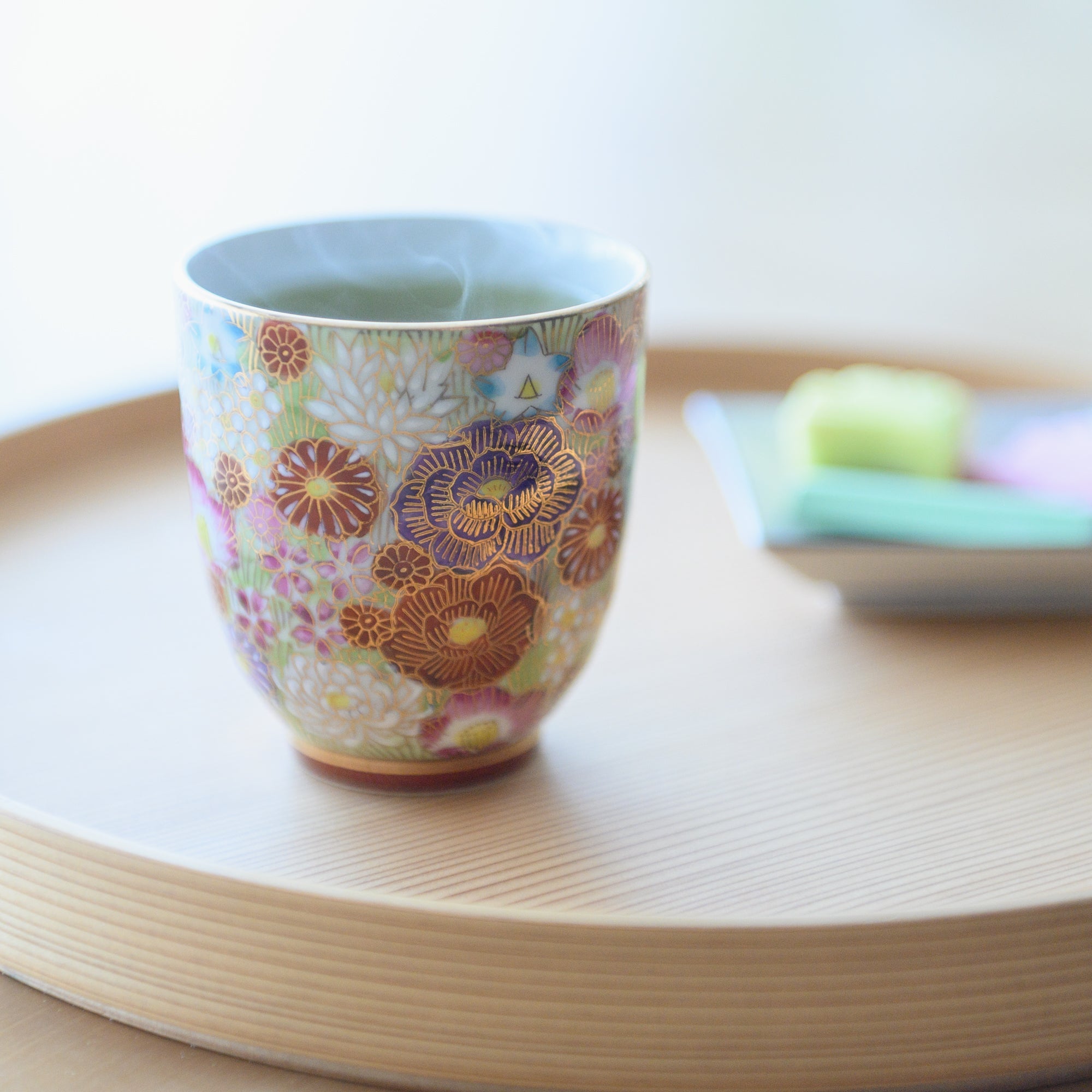
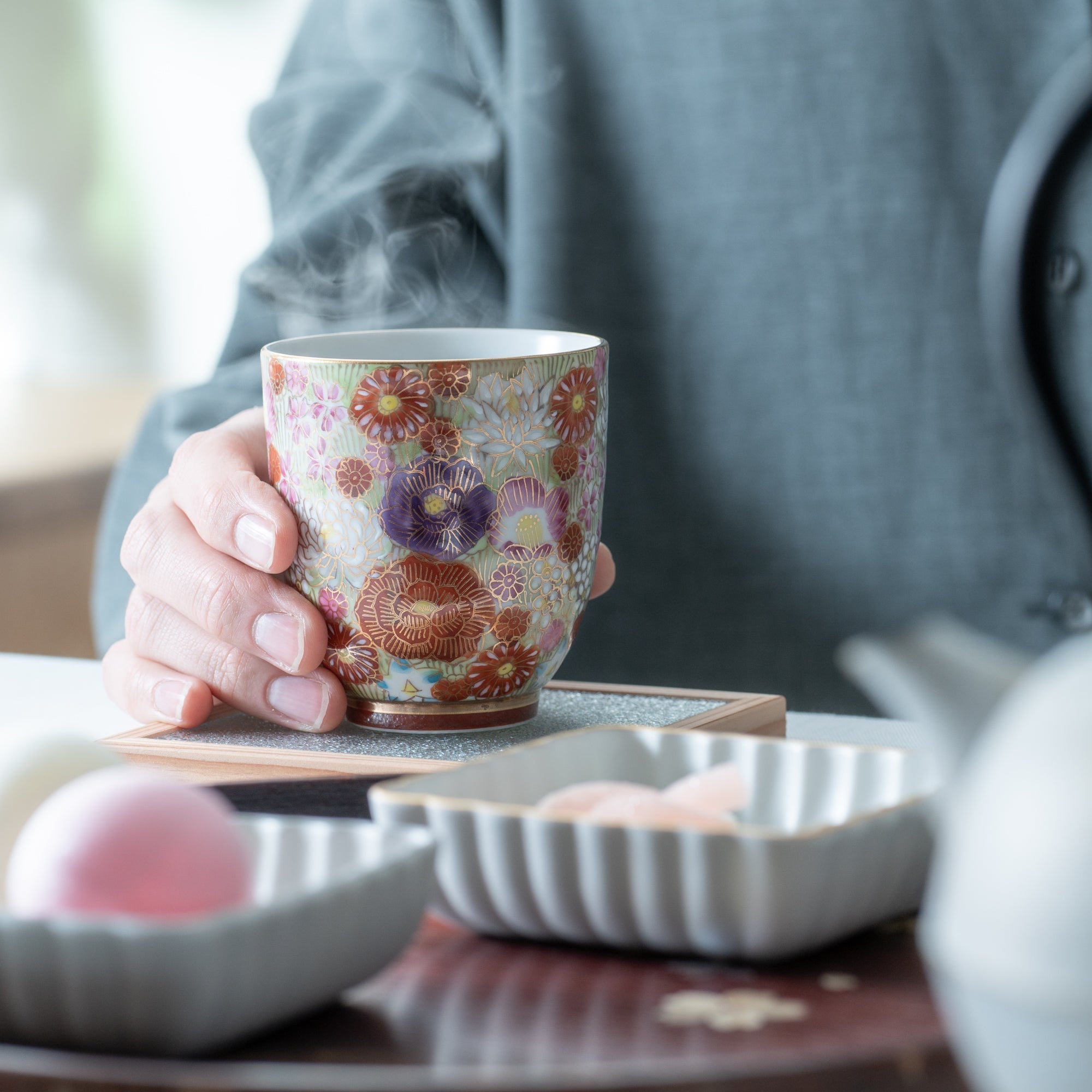
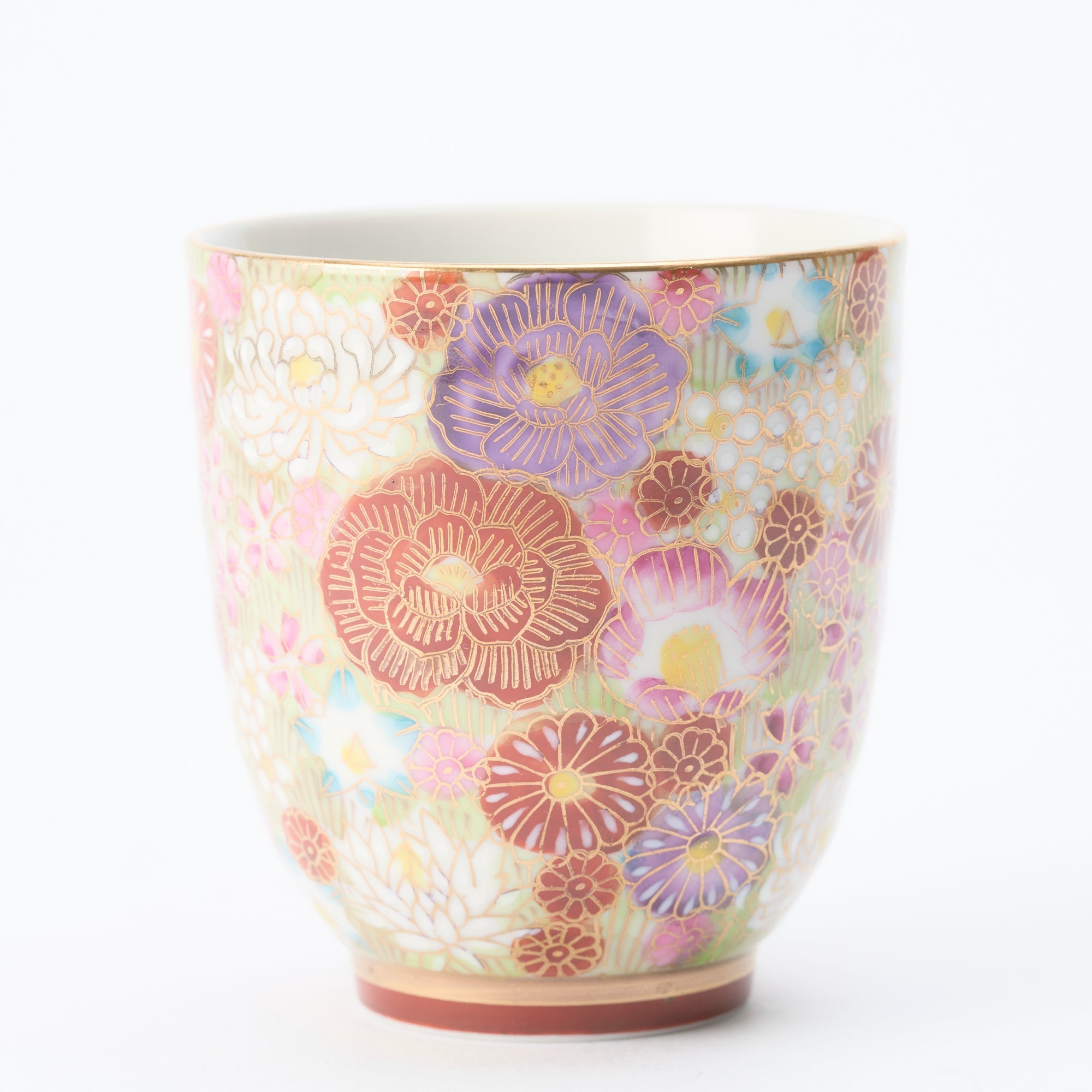
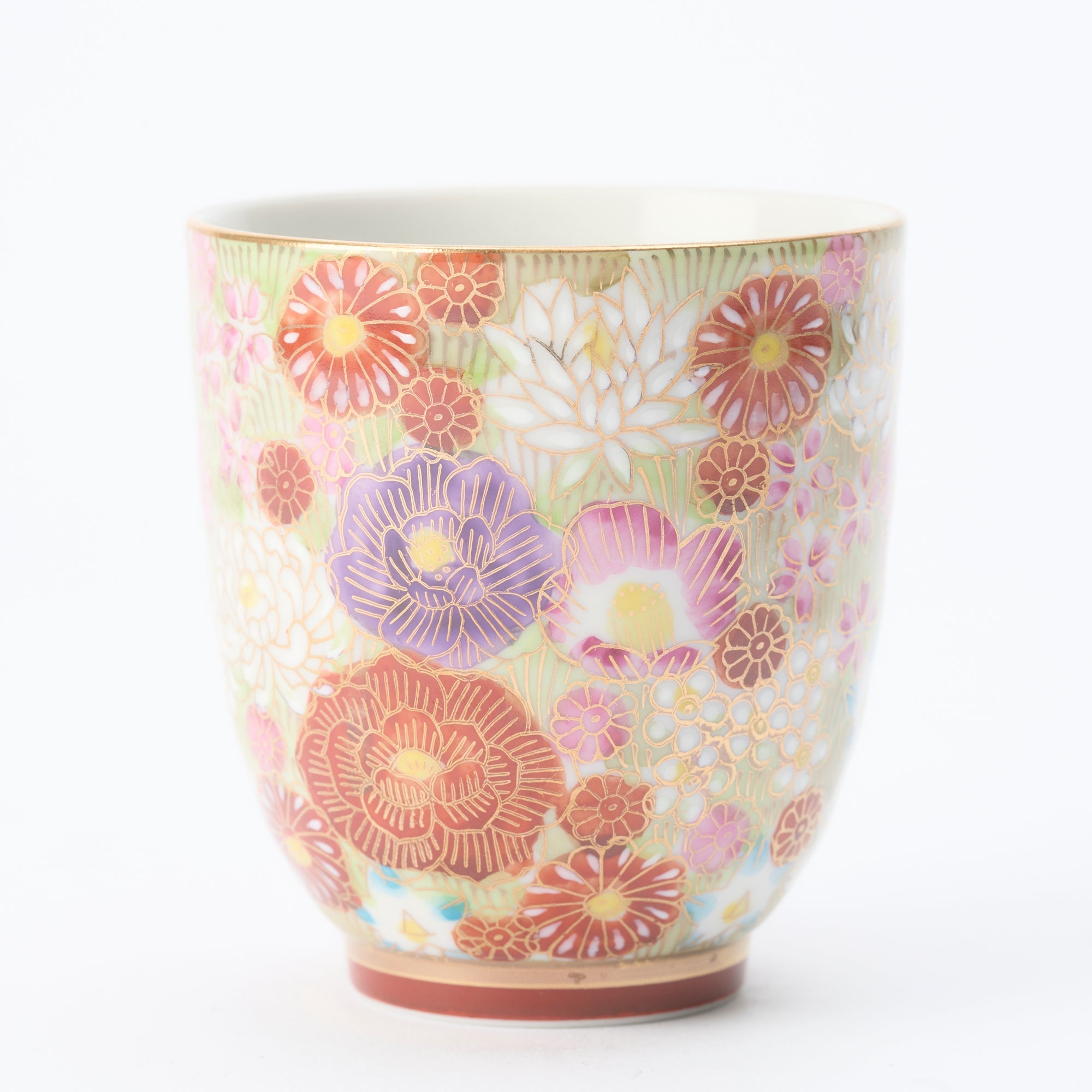
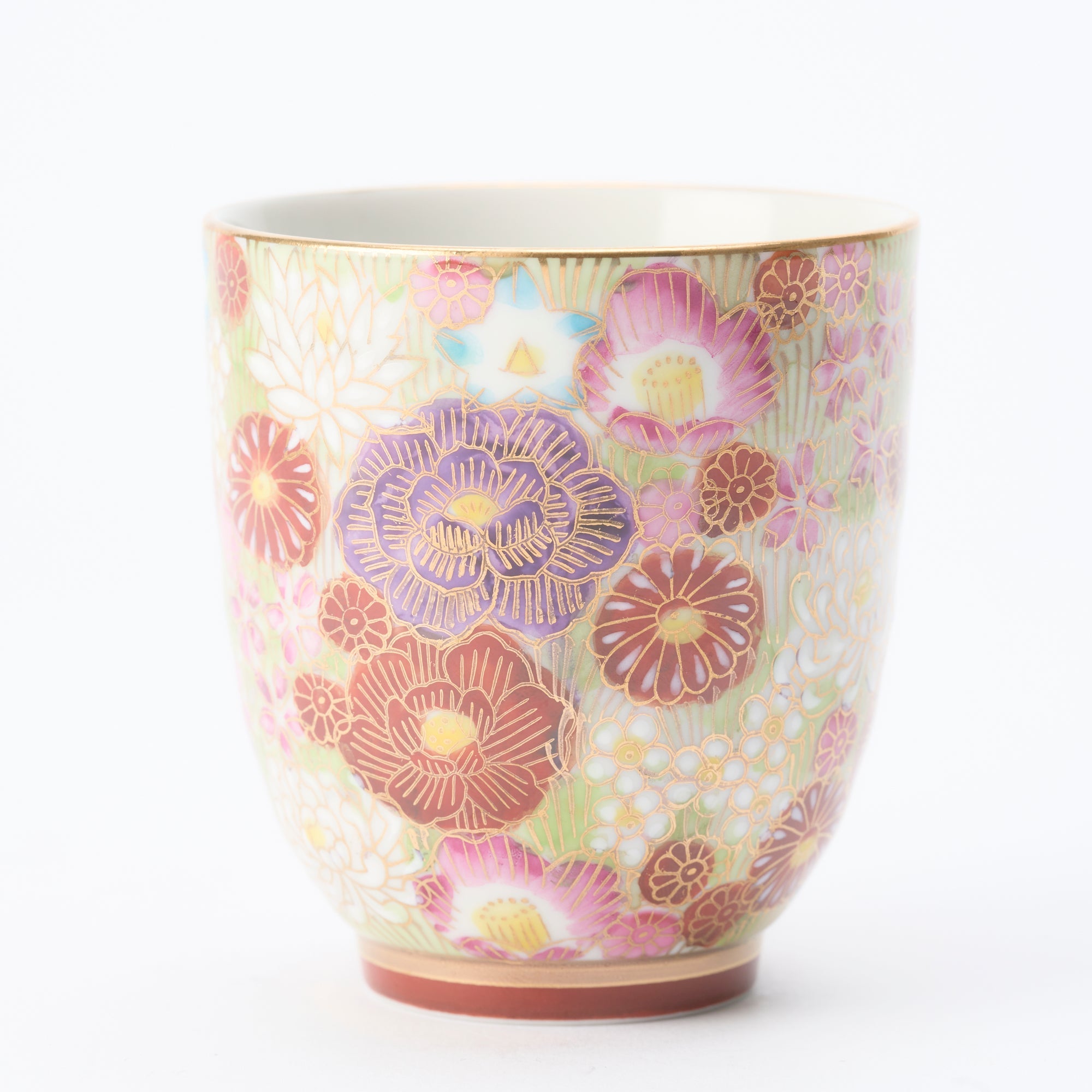
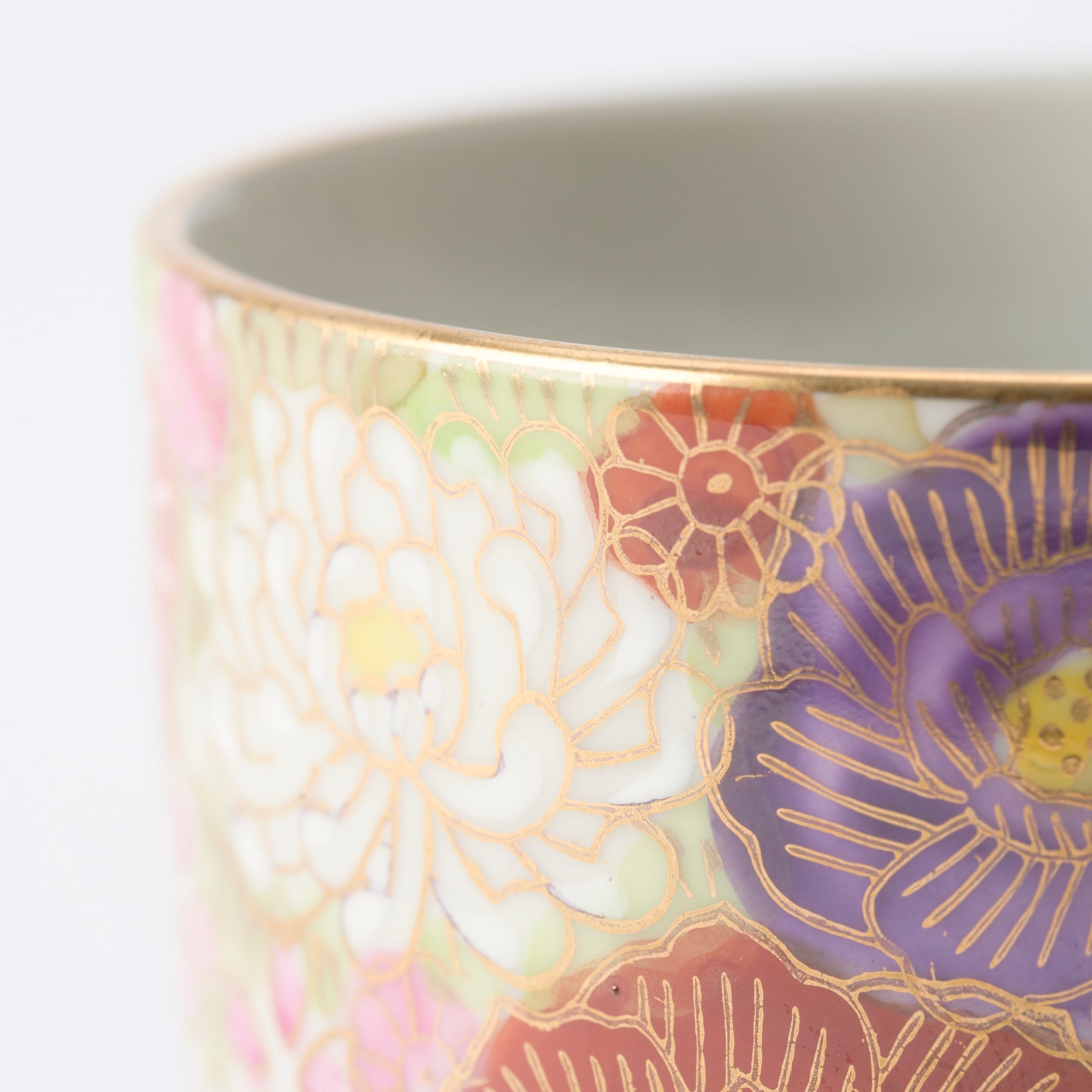
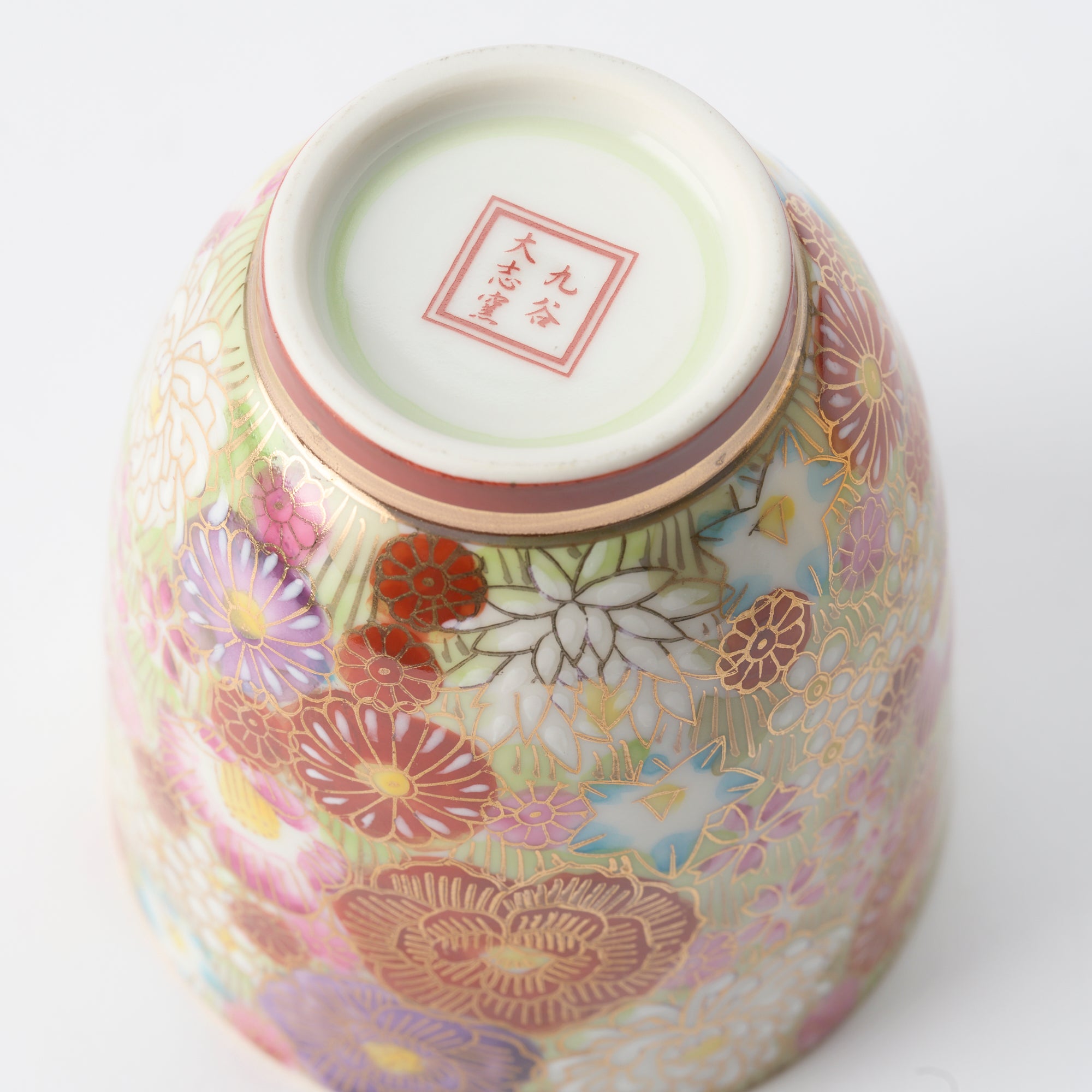
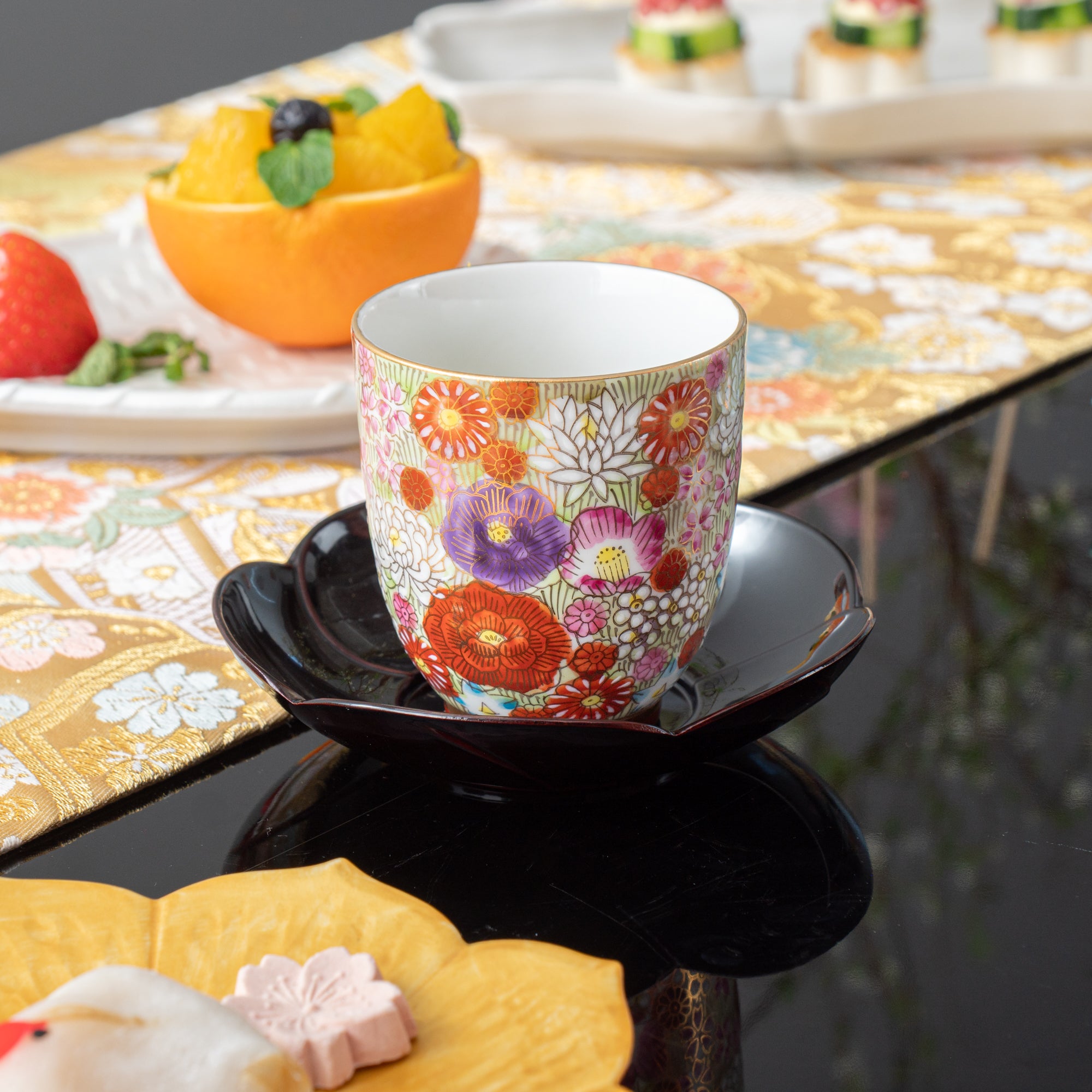
Taishi Kiln Hanazume Kutani Yunomi Japanese Teacup
Estimated Shipping Widget will be displayed here!
This elegant teacup, adorned with the sophisticated hanazume technique, transcends its functional use to become a piece of art that elevates the tea-drinking experience. Hanazume, characterized by its densely packed, intricately hand-painted flower patterns, envelops the cup in a vibrant bouquet of colors, mesmerizing the beholder.
Each stroke on the cup is crafted with meticulous attention to detail, creating a harmonious blend of colors on its surface. This results in a lush visual feast, which is further enhanced by radiant gold trimmings. These trimmings not only add a layer of opulence but also accentuate the crisp, transparent quality of the Kutani ware, turning every sip into a moment of luxury.
Hand-painted by the skilled artisans of Taishi Kiln, a prestigious establishment founded in 2011 by the notable Kutani ware artist Yamachika Yasushi, this yunomi teacup is a fruit of the kiln's dedication to maintaining the rich heritage of Kutani ware while embracing a modern aesthetic.
As each piece is unique, crafted with the utmost care and precision, owning a Taishi Kiln yunomi teacup celebrates the enduring allure and craftsmanship of Japanese pottery, promising to enhance the beauty and serenity of your tea.
PRODUCT DETAIL
- Quantity: 1
- Dimension: H 8.0 cm (3.1 in) x D 7.0 cm (2.7 in)
- Capacity: 170 ml (5.7 oz)
- Material: Porcelain - Kutani ware
- Origin: Made in Japan
- Brand: Taishi Kiln
![]()
Choose options













































Estimated Shipping Widget will be displayed here!
International Shipping
Multiple International Shipping Options
Discounted shipping for over 500000!
Free shipping for over 5000000!
Insured shipping service
Full compensation for any damage during transit.
Made by Japanese craftsmen
Fair Pricing, free Furoshiki wrapping!

